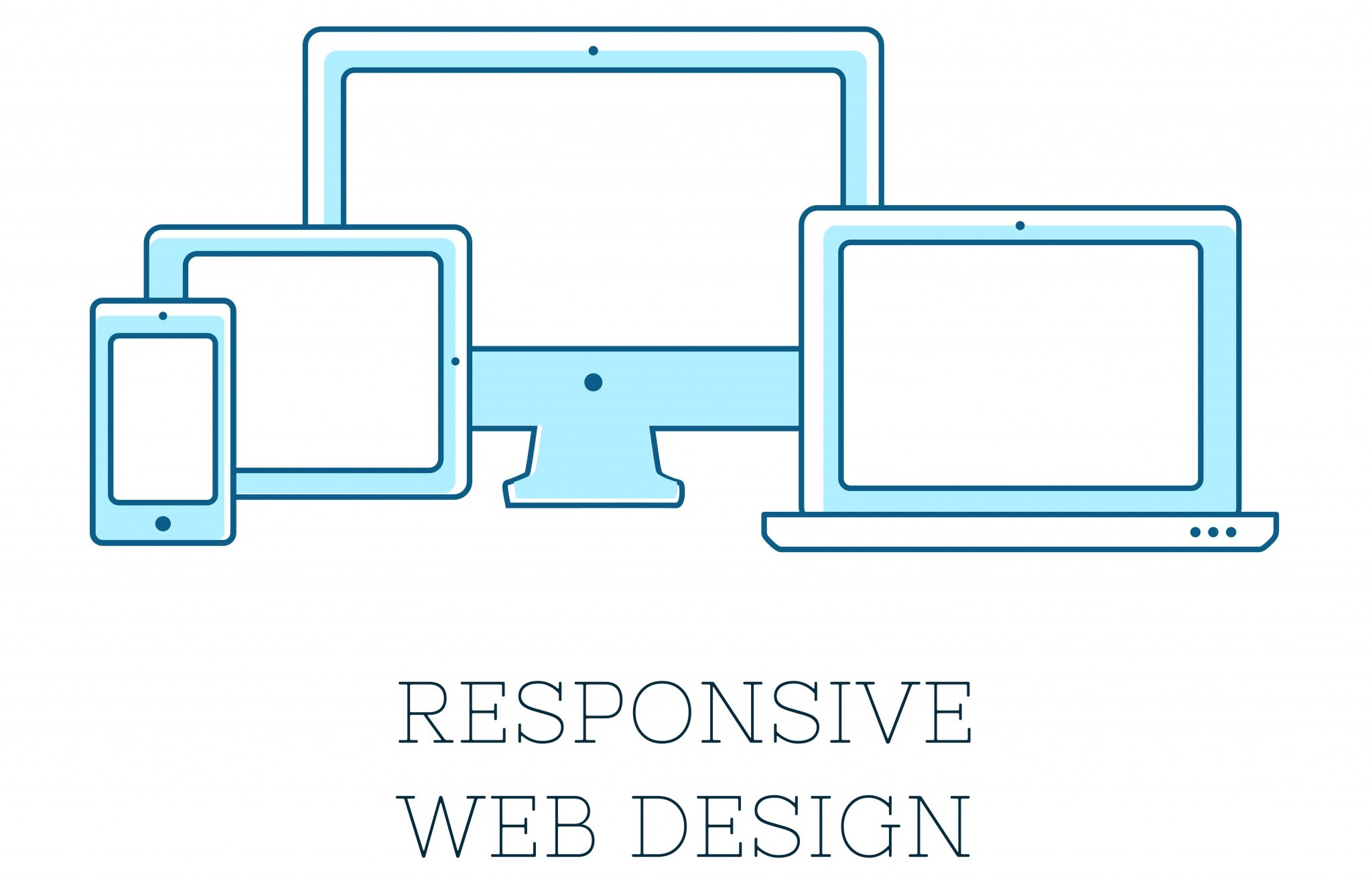I dag startede kernemodul 2: Ikt og interaktionsdesign. Herunder kan man finde litteraturlisten og 2 opstartsvideoer om interaktionsdesign. Modul 2 er delt op i 2 kurser med hver deres tilhørende litteratur. Jeg glæder mig også til at komme i gang med dette modul.
Gillian Crampton Smith – What is interaction design
Bill Moggride lecture at Stanford with Terry Winograd
Litteratur
Generelt
2611593
7RRPWXRZ
1
apa
50
creator
asc
1445
http://troelschristensen.dk/wp-content/plugins/zotpress/
%7B%22status%22%3A%22success%22%2C%22updateneeded%22%3Afalse%2C%22instance%22%3Afalse%2C%22meta%22%3A%7B%22request_last%22%3A0%2C%22request_next%22%3A0%2C%22used_cache%22%3Atrue%7D%2C%22data%22%3A%5B%7B%22key%22%3A%228JJCAFFI%22%2C%22library%22%3A%7B%22id%22%3A2611593%7D%2C%22meta%22%3A%7B%22creatorSummary%22%3A%22Barthes%22%2C%22parsedDate%22%3A%221996%22%2C%22numChildren%22%3A0%7D%2C%22bib%22%3A%22%3Cdiv%20class%3D%5C%22csl-bib-body%5C%22%20style%3D%5C%22line-height%3A%202%3B%20padding-left%3A%201em%3B%20text-indent%3A-1em%3B%5C%22%3E%5Cn%20%20%3Cdiv%20class%3D%5C%22csl-entry%5C%22%3EBarthes%2C%20R.%20%281996%29.%20%3Ci%3EDet%20lyse%20kammer%3A%20bem%26%23xE6%3Brkninger%20om%20fotografiet%3C%5C%2Fi%3E.%20Politisk%20Revy.%3C%5C%2Fdiv%3E%5Cn%3C%5C%2Fdiv%3E%22%2C%22data%22%3A%7B%22itemType%22%3A%22book%22%2C%22title%22%3A%22Det%20lyse%20kammer%3A%20bem%5Cu00e6rkninger%20om%20fotografiet%22%2C%22creators%22%3A%5B%7B%22creatorType%22%3A%22author%22%2C%22firstName%22%3A%22Roland%22%2C%22lastName%22%3A%22Barthes%22%7D%5D%2C%22abstractNote%22%3A%22%22%2C%22date%22%3A%221996%22%2C%22language%22%3A%22Danish%22%2C%22ISBN%22%3A%22978-87-7378-052-7%22%2C%22url%22%3A%22%22%2C%22collections%22%3A%5B%227RRPWXRZ%22%5D%2C%22dateModified%22%3A%222015-10-16T16%3A03%3A24Z%22%7D%7D%2C%7B%22key%22%3A%22DR9CBI2C%22%2C%22library%22%3A%7B%22id%22%3A2611593%7D%2C%22meta%22%3A%7B%22creatorSummary%22%3A%22KL%22%2C%22parsedDate%22%3A%222014-10-06%22%2C%22numChildren%22%3A0%7D%2C%22bib%22%3A%22%3Cdiv%20class%3D%5C%22csl-bib-body%5C%22%20style%3D%5C%22line-height%3A%202%3B%20padding-left%3A%201em%3B%20text-indent%3A-1em%3B%5C%22%3E%5Cn%20%20%3Cdiv%20class%3D%5C%22csl-entry%5C%22%3EKL.%20%282014%29.%20%3Ci%3EFakta-ark%20-%20brugerportalsinitiativet%20-%26%23xA0%3B%202.%20fase%3C%5C%2Fi%3E.%20%3Ca%20class%3D%27zp-ItemURL%27%20href%3D%27http%3A%5C%2F%5C%2Fwww.kl.dk%5C%2FPageFiles%5C%2F1300842%5C%2FFaktaark%2520brugerportalsinitiativet.pdf%27%3Ehttp%3A%5C%2F%5C%2Fwww.kl.dk%5C%2FPageFiles%5C%2F1300842%5C%2FFaktaark%2520brugerportalsinitiativet.pdf%3C%5C%2Fa%3E%3C%5C%2Fdiv%3E%5Cn%3C%5C%2Fdiv%3E%22%2C%22data%22%3A%7B%22itemType%22%3A%22document%22%2C%22title%22%3A%22Fakta-ark%20-%20brugerportalsinitiativet%20-%20%202.%20fase%22%2C%22creators%22%3A%5B%7B%22creatorType%22%3A%22author%22%2C%22name%22%3A%22KL%22%7D%5D%2C%22abstractNote%22%3A%22Fakta-ark%20om%20brugerportalsinitiativet%20%28oktober%202014%29%20fra%20proces-%20og%20indholdsarbejdsgruppen.%20Indeholder%20detaljerede%20lister%20over%20og%20beskrivelser%20af%20kernefunktioner%2C%20processer%20og%20andre%20elementer%20%28dashboard%20og%20eksterne%20tjenester%29%2C%20der%20n%5Cu00e6vnes%20p%5Cu00e5%20overordnet%20plan%20i%20l%5Cu00f8sningsbeskrivelsen.%22%2C%22date%22%3A%226.%20October%202014%22%2C%22language%22%3A%22Dansk%22%2C%22url%22%3A%22http%3A%5C%2F%5C%2Fwww.kl.dk%5C%2FPageFiles%5C%2F1300842%5C%2FFaktaark%2520brugerportalsinitiativet.pdf%22%2C%22collections%22%3A%5B%227RRPWXRZ%22%2C%22G76Z6KU8%22%5D%2C%22dateModified%22%3A%222016-05-26T22%3A32%3A18Z%22%7D%7D%2C%7B%22key%22%3A%22DDW7HWNZ%22%2C%22library%22%3A%7B%22id%22%3A2611593%7D%2C%22meta%22%3A%7B%22creatorSummary%22%3A%22Preece%20et%20al.%22%2C%22parsedDate%22%3A%222011%22%2C%22numChildren%22%3A1%7D%2C%22bib%22%3A%22%3Cdiv%20class%3D%5C%22csl-bib-body%5C%22%20style%3D%5C%22line-height%3A%202%3B%20padding-left%3A%201em%3B%20text-indent%3A-1em%3B%5C%22%3E%5Cn%20%20%3Cdiv%20class%3D%5C%22csl-entry%5C%22%3EPreece%2C%20J.%2C%20Rogers%2C%20Y.%2C%20%26amp%3B%20Sharp%2C%20H.%20%282011%29.%20%3Ci%3EInteraction%20design%3A%20beyond%20human-computer%20interaction%3C%5C%2Fi%3E%20%283.%20ed%29.%20Wiley.%3C%5C%2Fdiv%3E%5Cn%3C%5C%2Fdiv%3E%22%2C%22data%22%3A%7B%22itemType%22%3A%22book%22%2C%22title%22%3A%22Interaction%20design%3A%20beyond%20human-computer%20interaction%22%2C%22creators%22%3A%5B%7B%22creatorType%22%3A%22author%22%2C%22firstName%22%3A%22Jenny%22%2C%22lastName%22%3A%22Preece%22%7D%2C%7B%22creatorType%22%3A%22author%22%2C%22firstName%22%3A%22Yvonne%22%2C%22lastName%22%3A%22Rogers%22%7D%2C%7B%22creatorType%22%3A%22author%22%2C%22firstName%22%3A%22Helen%22%2C%22lastName%22%3A%22Sharp%22%7D%5D%2C%22abstractNote%22%3A%22%22%2C%22date%22%3A%222011%22%2C%22language%22%3A%22%22%2C%22ISBN%22%3A%22978-0-470-66576-3%22%2C%22url%22%3A%22%22%2C%22collections%22%3A%5B%227RRPWXRZ%22%5D%2C%22dateModified%22%3A%222015-11-28T14%3A00%3A16Z%22%7D%7D%2C%7B%22key%22%3A%22HF4KBPAQ%22%2C%22library%22%3A%7B%22id%22%3A2611593%7D%2C%22meta%22%3A%7B%22creatorSummary%22%3A%22Stoltenberg%22%2C%22parsedDate%22%3A%222015-10-07%22%2C%22numChildren%22%3A0%7D%2C%22bib%22%3A%22%3Cdiv%20class%3D%5C%22csl-bib-body%5C%22%20style%3D%5C%22line-height%3A%202%3B%20padding-left%3A%201em%3B%20text-indent%3A-1em%3B%5C%22%3E%5Cn%20%20%3Cdiv%20class%3D%5C%22csl-entry%5C%22%3EStoltenberg%2C%20G.%20%282015%2C%20October%207%29.%20%3Ci%3EL%26%23xE6%3Bringsplatform%20-%20Brugerportalsinitiativet%3C%5C%2Fi%3E.%20L%26%23xE6%3Bringsplatform%20-%20Brugerportalsinitiativet%2C%20Park-Inn%2C%20K%26%23xF8%3Bbenhavn.%20%3Ca%20class%3D%27zp-ItemURL%27%20href%3D%27http%3A%5C%2F%5C%2Fwww.kl.dk%5C%2FPageFiles%5C%2F1314105%5C%2Fbpi-oplaeg.pdf%27%3Ehttp%3A%5C%2F%5C%2Fwww.kl.dk%5C%2FPageFiles%5C%2F1314105%5C%2Fbpi-oplaeg.pdf%3C%5C%2Fa%3E%3C%5C%2Fdiv%3E%5Cn%3C%5C%2Fdiv%3E%22%2C%22data%22%3A%7B%22itemType%22%3A%22presentation%22%2C%22title%22%3A%22L%5Cu00e6ringsplatform%20-%20Brugerportalsinitiativet%22%2C%22creators%22%3A%5B%7B%22creatorType%22%3A%22presenter%22%2C%22firstName%22%3A%22Gitte%22%2C%22lastName%22%3A%22Stoltenberg%22%7D%5D%2C%22abstractNote%22%3A%22%22%2C%22date%22%3A%227%20October%202015%22%2C%22url%22%3A%22http%3A%5C%2F%5C%2Fwww.kl.dk%5C%2FPageFiles%5C%2F1314105%5C%2Fbpi-oplaeg.pdf%22%2C%22language%22%3A%22Dansk%22%2C%22collections%22%3A%5B%227RRPWXRZ%22%5D%2C%22dateModified%22%3A%222015-11-28T08%3A09%3A20Z%22%7D%7D%5D%7D
Barthes, R. (1996). Det lyse kammer: bemærkninger om fotografiet. Politisk Revy.
KL. (2014). Fakta-ark - brugerportalsinitiativet - 2. fase. http://www.kl.dk/PageFiles/1300842/Faktaark%20brugerportalsinitiativet.pdf
Preece, J., Rogers, Y., & Sharp, H. (2011). Interaction design: beyond human-computer interaction (3. ed). Wiley.
Stoltenberg, G. (2015, October 7). Læringsplatform - Brugerportalsinitiativet. Læringsplatform - Brugerportalsinitiativet, Park-Inn, København. http://www.kl.dk/PageFiles/1314105/bpi-oplaeg.pdf
Kursus 1: Erkendelse og visualisering
Primær litteratur
2611593
B3AVJWHQ
1
apa
50
creator
asc
1445
http://troelschristensen.dk/wp-content/plugins/zotpress/
%7B%22status%22%3A%22success%22%2C%22updateneeded%22%3Afalse%2C%22instance%22%3Afalse%2C%22meta%22%3A%7B%22request_last%22%3A0%2C%22request_next%22%3A0%2C%22used_cache%22%3Atrue%7D%2C%22data%22%3A%5B%7B%22key%22%3A%2269WWHGVI%22%2C%22library%22%3A%7B%22id%22%3A2611593%7D%2C%22meta%22%3A%7B%22creatorSummary%22%3A%22Arnheim%22%2C%22parsedDate%22%3A%221969%22%2C%22numChildren%22%3A1%7D%2C%22bib%22%3A%22%3Cdiv%20class%3D%5C%22csl-bib-body%5C%22%20style%3D%5C%22line-height%3A%202%3B%20padding-left%3A%201em%3B%20text-indent%3A-1em%3B%5C%22%3E%5Cn%20%20%3Cdiv%20class%3D%5C%22csl-entry%5C%22%3EArnheim%2C%20R.%20%281969%29.%20%3Ci%3EVisual%20thinking%3C%5C%2Fi%3E%20%28Nachdr.%29.%20Univ.%20of%20California%20Press.%3C%5C%2Fdiv%3E%5Cn%3C%5C%2Fdiv%3E%22%2C%22data%22%3A%7B%22itemType%22%3A%22book%22%2C%22title%22%3A%22Visual%20thinking%22%2C%22creators%22%3A%5B%7B%22creatorType%22%3A%22author%22%2C%22firstName%22%3A%22Rudolf%22%2C%22lastName%22%3A%22Arnheim%22%7D%5D%2C%22abstractNote%22%3A%22%22%2C%22date%22%3A%221969%22%2C%22language%22%3A%22eng%22%2C%22ISBN%22%3A%22978-0-520-24226-5%22%2C%22url%22%3A%22%22%2C%22collections%22%3A%5B%22B3AVJWHQ%22%5D%2C%22dateModified%22%3A%222015-10-16T16%3A10%3A17Z%22%7D%7D%2C%7B%22key%22%3A%22IGVES4VJ%22%2C%22library%22%3A%7B%22id%22%3A2611593%7D%2C%22meta%22%3A%7B%22creatorSummary%22%3A%22Bruner%22%2C%22parsedDate%22%3A%222003%22%2C%22numChildren%22%3A2%7D%2C%22bib%22%3A%22%3Cdiv%20class%3D%5C%22csl-bib-body%5C%22%20style%3D%5C%22line-height%3A%202%3B%20padding-left%3A%201em%3B%20text-indent%3A-1em%3B%5C%22%3E%5Cn%20%20%3Cdiv%20class%3D%5C%22csl-entry%5C%22%3EBruner%2C%20J.%20S.%20%282003%29.%20%3Ci%3EMaking%20stories%3A%20law%2C%20literature%2C%20life%3C%5C%2Fi%3E%20%281.%20Harvard%20Univ.%20Press%20paperback%20ed%29.%20Harvard%20Univ.%20Press.%3C%5C%2Fdiv%3E%5Cn%3C%5C%2Fdiv%3E%22%2C%22data%22%3A%7B%22itemType%22%3A%22book%22%2C%22title%22%3A%22Making%20stories%3A%20law%2C%20literature%2C%20life%22%2C%22creators%22%3A%5B%7B%22creatorType%22%3A%22author%22%2C%22firstName%22%3A%22Jerome%20Seymour%22%2C%22lastName%22%3A%22Bruner%22%7D%5D%2C%22abstractNote%22%3A%22%22%2C%22date%22%3A%222003%22%2C%22language%22%3A%22eng%22%2C%22ISBN%22%3A%22978-0-674-01099-4%22%2C%22url%22%3A%22%22%2C%22collections%22%3A%5B%22B3AVJWHQ%22%2C%2277FUV6ZH%22%5D%2C%22dateModified%22%3A%222015-11-28T19%3A23%3A18Z%22%7D%7D%2C%7B%22key%22%3A%228WDESZ6H%22%2C%22library%22%3A%7B%22id%22%3A2611593%7D%2C%22meta%22%3A%7B%22creatorSummary%22%3A%22Bruner%22%2C%22parsedDate%22%3A%221991%22%2C%22numChildren%22%3A0%7D%2C%22bib%22%3A%22%3Cdiv%20class%3D%5C%22csl-bib-body%5C%22%20style%3D%5C%22line-height%3A%202%3B%20padding-left%3A%201em%3B%20text-indent%3A-1em%3B%5C%22%3E%5Cn%20%20%3Cdiv%20class%3D%5C%22csl-entry%5C%22%3EBruner%2C%20J.%20S.%20%281991%29.%20The%20Narrative%20Construction%20of%20Reality.%20%3Ci%3ECritical%20Inquiry%3C%5C%2Fi%3E%2C%20%3Ci%3E18%3C%5C%2Fi%3E%281%29%2C%201%26%23x2013%3B21.%20%3Ca%20class%3D%27zp-DOIURL%27%20href%3D%27https%3A%5C%2F%5C%2Fdoi.org%5C%2F10.1086%5C%2F448619%27%3Ehttps%3A%5C%2F%5C%2Fdoi.org%5C%2F10.1086%5C%2F448619%3C%5C%2Fa%3E%3C%5C%2Fdiv%3E%5Cn%3C%5C%2Fdiv%3E%22%2C%22data%22%3A%7B%22itemType%22%3A%22journalArticle%22%2C%22title%22%3A%22The%20Narrative%20Construction%20of%20Reality%22%2C%22creators%22%3A%5B%7B%22creatorType%22%3A%22author%22%2C%22firstName%22%3A%22Jerome%20Seymour%22%2C%22lastName%22%3A%22Bruner%22%7D%5D%2C%22abstractNote%22%3A%22Surely%20since%20the%20Enlightenment%2C%20if%20not%20before%2C%20the%20study%20of%20mind%20has%20centered%20principally%20on%20how%20man%20achieves%20a%20%5Cu201ctrue%5Cu201d%20knowledge%20of%20the%20world.%20Emphasis%20in%20this%20pursuit%20has%20varied%2C%20of%20course%3A%20empiricists%20have%20concentrated%20on%20the%20mind%5Cu2019s%20interplay%20with%20an%20external%20world%20of%20nature%2C%20hoping%20to%20find%20the%20key%20in%20the%20association%20of%20sensations%20and%20ideas%2C%20while%20rationalists%20have%20looked%20inward%20to%20the%20powers%20of%20mind%20itself%20for%20the%20principles%20of%20right%20reason.%20The%20objective%2C%20in%20either%20case%2C%20has%20been%20to%20discover%20how%20we%20achieve%20%5Cu201creality%2C%5Cu201d%20that%20is%20to%20say%2C%20how%20we%20get%20a%20reliable%20fix%20on%20the%20world%2C%20a%20world%20that%20is%2C%20as%20it%20were%2C%20assumed%20to%20be%20immutable%20and%2C%20as%20it%20were%2C%20%5Cu201cthere%20to%20be%20observed.%5Cu201dThis%20quest%20has%2C%20of%20course%2C%20had%20a%20profound%20effect%20on%20the%20development%20of%20psychology%2C%20and%20the%20empiricist%20and%20rationalist%20traditions%20have%20dominated%20our%20conceptions%20of%20how%20the%20mind%20grows%20and%20how%20it%20gets%20its%20grasp%20on%20the%20%5Cu201creal%20world.%5Cu201d%20Indeed%2C%20at%20midcentury%20Gestalt%20theory%20represented%20the%20rationalist%20wing%20of%20this%20enterprise%20and%20American%20learning%20theory%20the%20empiricist.%20Both%20gave%20accounts%20of%20mental%20development%20as%20proceeding%20in%20some%20more%20or%20less%20linear%20and%20uniform%20fashion%20from%20an%20initial%20incompetence%20in%20grasping%20reality%20to%20a%20final%20competence%2C%20in%20one%20case%20attributing%20it%20to%20the%20work%20out%20of%20internal%20processes%20or%20mental%20organization%2C%20and%20in%20the%20other%20to%20some%20unspecified%20principle%20of%20reflection%20by%20which%5Cu2014whether%20through%20reinforcement%2C%20association%2C%20or%20conditioning%5Cu2014we%20came%20to%20respond%20to%20the%20world%20%5Cu201cas%20it%20is.%5Cu201d%20There%20have%20always%20been%20dissidents%20who%20challenged%20these%20views%2C%20but%20conjectures%20about%20human%20mental%20development%20have%20been%20influenced%20far%20more%20by%20majoritarian%20rationalism%20and%20empiricism%20than%20by%20these%20dissident%20voices.%20Jerome%20Bruner%20is%20research%20professor%20of%20psychology%20at%20New%20York%20University%2C%20where%20he%20is%20also%20serving%20as%20Meyer%20Visiting%20Professor%20of%20Law.%20His%20most%20recent%20book%2C%20Acts%20of%20Meaning%2C%20appeared%20in%201990.%20In%201987%20he%20received%20the%20Balzan%20Prize%20for%20%5Cu201ca%20lifetime%20contribution%20to%20the%20study%20of%20human%20psychology.%5Cu201d%22%2C%22date%22%3A%22Autumn%2C%201991%22%2C%22language%22%3A%22en%22%2C%22DOI%22%3A%2210.1086%5C%2F448619%22%2C%22ISSN%22%3A%220093-1896%2C%201539-7858%22%2C%22url%22%3A%22http%3A%5C%2F%5C%2Fwww.journals.uchicago.edu%5C%2Fdoi%5C%2Fabs%5C%2F10.1086%5C%2F448619%22%2C%22collections%22%3A%5B%22B3AVJWHQ%22%5D%2C%22dateModified%22%3A%222017-01-28T00%3A40%3A04Z%22%7D%7D%2C%7B%22key%22%3A%22A7BZ4CZK%22%2C%22library%22%3A%7B%22id%22%3A2611593%7D%2C%22meta%22%3A%7B%22creatorSummary%22%3A%22Kj%5Cu00f8rup%22%2C%22parsedDate%22%3A%221995%22%2C%22numChildren%22%3A0%7D%2C%22bib%22%3A%22%3Cdiv%20class%3D%5C%22csl-bib-body%5C%22%20style%3D%5C%22line-height%3A%202%3B%20padding-left%3A%201em%3B%20text-indent%3A-1em%3B%5C%22%3E%5Cn%20%20%3Cdiv%20class%3D%5C%22csl-entry%5C%22%3EKj%26%23xF8%3Brup%2C%20S.%20%281995%29.%20%3Ci%3EHvorfor%20smiler%20Mona%20Lisa%3F%3A%20en%20bog%20om%20billeder%20og%20deres%20brug%3C%5C%2Fi%3E.%20Roskilde%20Universitetsforlag.%3C%5C%2Fdiv%3E%5Cn%3C%5C%2Fdiv%3E%22%2C%22data%22%3A%7B%22itemType%22%3A%22book%22%2C%22title%22%3A%22Hvorfor%20smiler%20Mona%20Lisa%3F%3A%20en%20bog%20om%20billeder%20og%20deres%20brug%22%2C%22creators%22%3A%5B%7B%22creatorType%22%3A%22author%22%2C%22firstName%22%3A%22S%5Cu00f8ren%22%2C%22lastName%22%3A%22Kj%5Cu00f8rup%22%7D%5D%2C%22abstractNote%22%3A%22%22%2C%22date%22%3A%221995%22%2C%22language%22%3A%22Danish%22%2C%22ISBN%22%3A%22978-87-7867-000-7%22%2C%22url%22%3A%22%22%2C%22collections%22%3A%5B%22B3AVJWHQ%22%5D%2C%22dateModified%22%3A%222015-10-16T16%3A18%3A06Z%22%7D%7D%2C%7B%22key%22%3A%22H43JRWDZ%22%2C%22library%22%3A%7B%22id%22%3A2611593%7D%2C%22meta%22%3A%7B%22creatorSummary%22%3A%22Nielsen%22%2C%22parsedDate%22%3A%222002-06-01%22%2C%22numChildren%22%3A0%7D%2C%22bib%22%3A%22%3Cdiv%20class%3D%5C%22csl-bib-body%5C%22%20style%3D%5C%22line-height%3A%202%3B%20padding-left%3A%201em%3B%20text-indent%3A-1em%3B%5C%22%3E%5Cn%20%20%3Cdiv%20class%3D%5C%22csl-entry%5C%22%3ENielsen%2C%20J.%20%282002%29.%20Visual%20communication%20and%20interaction.%20%3Ci%3EDigital%20Creativity%3C%5C%2Fi%3E%2C%20%3Ci%3E13%3C%5C%2Fi%3E%282%29%2C%2065%26%23x2013%3B70.%20%3Ca%20class%3D%27zp-DOIURL%27%20href%3D%27https%3A%5C%2F%5C%2Fdoi.org%5C%2F10.1076%5C%2Fdigc.13.2.65.3203%27%3Ehttps%3A%5C%2F%5C%2Fdoi.org%5C%2F10.1076%5C%2Fdigc.13.2.65.3203%3C%5C%2Fa%3E%3C%5C%2Fdiv%3E%5Cn%3C%5C%2Fdiv%3E%22%2C%22data%22%3A%7B%22itemType%22%3A%22journalArticle%22%2C%22title%22%3A%22Visual%20communication%20and%20interaction%22%2C%22creators%22%3A%5B%7B%22creatorType%22%3A%22author%22%2C%22firstName%22%3A%22Janni%22%2C%22lastName%22%3A%22Nielsen%22%7D%5D%2C%22abstractNote%22%3A%22%22%2C%22date%22%3A%222002-6-1%22%2C%22language%22%3A%22%22%2C%22DOI%22%3A%2210.1076%5C%2Fdigc.13.2.65.3203%22%2C%22ISSN%22%3A%221462-6268%22%2C%22url%22%3A%22http%3A%5C%2F%5C%2Fwww.tandfonline.com%5C%2Fdoi%5C%2Fabs%5C%2F10.1076%5C%2Fdigc.13.2.65.3203%22%2C%22collections%22%3A%5B%22B3AVJWHQ%22%5D%2C%22dateModified%22%3A%222015-10-16T16%3A25%3A12Z%22%7D%7D%2C%7B%22key%22%3A%22RZ5NXIP9%22%2C%22library%22%3A%7B%22id%22%3A2611593%7D%2C%22meta%22%3A%7B%22creatorSummary%22%3A%22Nielsen%22%2C%22parsedDate%22%3A%222003%22%2C%22numChildren%22%3A0%7D%2C%22bib%22%3A%22%3Cdiv%20class%3D%5C%22csl-bib-body%5C%22%20style%3D%5C%22line-height%3A%202%3B%20padding-left%3A%201em%3B%20text-indent%3A-1em%3B%5C%22%3E%5Cn%20%20%3Cdiv%20class%3D%5C%22csl-entry%5C%22%3ENielsen%2C%20J.%20%282003%29.%20The%20Imaginative%20Powers%20of%20the%20User%26%23xB4%3Bs%20Mind%3A%20A%20Prerequisite%20in%20Human-Computer%20Interaction.%20In%20%3Ci%3EHuman-Computer%20Interaction%3A%20Theory%20and%20Practice%2C%20%28part%201%29.%20Volume%201%20of%20the%20Proceedings%20of%20HCI%20International%202003%2C%2010th%20International%20Conference%20on%20Human%20-%20Computer%20Interaction%20Symposium%20on%20Human%20Interface%20%28Japan%29%202003%205th%20International%20Conference%20Engineering%20Psychology%20and%20Cognitive%20Ergonomics%202nd%20International%20Conference%20on%20Universal%20Access%20in%20Human%20-%20Computer%20Interaction%2022%20-27%20June%202003%2C%20Crete%2C%20Grece%3C%5C%2Fi%3E%20%28pp.%20371%26%23x2013%3B375%29.%20%3Ca%20class%3D%27zp-ItemURL%27%20href%3D%27openarchive.cbs.dk%5C%2Fbitstream%5C%2Fhandle%5C%2F10398%5C%2F6470%5C%2F2002-14.pdf%27%3Eopenarchive.cbs.dk%5C%2Fbitstream%5C%2Fhandle%5C%2F10398%5C%2F6470%5C%2F2002-14.pdf%3C%5C%2Fa%3E%3C%5C%2Fdiv%3E%5Cn%3C%5C%2Fdiv%3E%22%2C%22data%22%3A%7B%22itemType%22%3A%22bookSection%22%2C%22title%22%3A%22The%20Imaginative%20Powers%20of%20the%20User%5Cu00b4s%20Mind%3A%20A%20Prerequisite%20in%20Human-Computer%20Interaction%22%2C%22creators%22%3A%5B%7B%22creatorType%22%3A%22author%22%2C%22firstName%22%3A%22Janni%22%2C%22lastName%22%3A%22Nielsen%22%7D%5D%2C%22abstractNote%22%3A%22%22%2C%22bookTitle%22%3A%22Human-Computer%20Interaction%3A%20Theory%20and%20Practice%2C%20%28part%201%29.%20Volume%201%20of%20the%20Proceedings%20of%20HCI%20International%202003%2C%2010th%20International%20Conference%20on%20Human%20-%20Computer%20Interaction%20Symposium%20on%20Human%20Interface%20%28Japan%29%202003%205th%20International%20Conference%20Engineering%20Psychology%20and%20Cognitive%20Ergonomics%202nd%20International%20Conference%20on%20Universal%20Access%20in%20Human%20-%20Computer%20Interaction%2022%20-27%20June%202003%2C%20Crete%2C%20Grece%22%2C%22date%22%3A%222003%22%2C%22language%22%3A%22%22%2C%22ISBN%22%3A%22%22%2C%22url%22%3A%22openarchive.cbs.dk%5C%2Fbitstream%5C%2Fhandle%5C%2F10398%5C%2F6470%5C%2F2002-14.pdf%22%2C%22collections%22%3A%5B%22B3AVJWHQ%22%5D%2C%22dateModified%22%3A%222015-10-16T16%3A33%3A19Z%22%7D%7D%2C%7B%22key%22%3A%22MVQZUBEQ%22%2C%22library%22%3A%7B%22id%22%3A2611593%7D%2C%22meta%22%3A%7B%22creatorSummary%22%3A%22Nielsen%22%2C%22parsedDate%22%3A%221987%22%2C%22numChildren%22%3A1%7D%2C%22bib%22%3A%22%3Cdiv%20class%3D%5C%22csl-bib-body%5C%22%20style%3D%5C%22line-height%3A%202%3B%20padding-left%3A%201em%3B%20text-indent%3A-1em%3B%5C%22%3E%5Cn%20%20%3Cdiv%20class%3D%5C%22csl-entry%5C%22%3ENielsen%2C%20J.%20%281987%29.%20Introduktion%20til%20en%20erkendelsesmodel.%20In%20%3Ci%3EDatamater%20og%20erkendelsesprocesser%3A%20en%20teoretisk%20analyse%20af%20erkendelsesparadigmer%2C%20set%20i%20relation%20til%20nogle%208.%20klasse%20elevers%20arbejde%20med%20datamater%3C%5C%2Fi%3E%20%28pp.%20123%26%23x2013%3B137%29.%20Institut%20for%20P%26%23xE6%3Bdagogik%20og%20Psykologi%2C%20Danmarks%20L%26%23xE6%3Brerh%26%23xF8%3Bjskole.%3C%5C%2Fdiv%3E%5Cn%3C%5C%2Fdiv%3E%22%2C%22data%22%3A%7B%22itemType%22%3A%22bookSection%22%2C%22title%22%3A%22Introduktion%20til%20en%20erkendelsesmodel%22%2C%22creators%22%3A%5B%7B%22creatorType%22%3A%22author%22%2C%22firstName%22%3A%22Janni%22%2C%22lastName%22%3A%22Nielsen%22%7D%5D%2C%22abstractNote%22%3A%22%22%2C%22bookTitle%22%3A%22Datamater%20og%20erkendelsesprocesser%3A%20en%20teoretisk%20analyse%20af%20erkendelsesparadigmer%2C%20set%20i%20relation%20til%20nogle%208.%20klasse%20elevers%20arbejde%20med%20datamater%22%2C%22date%22%3A%221987%22%2C%22language%22%3A%22Danish%22%2C%22ISBN%22%3A%22978-87-87315-50-0%22%2C%22url%22%3A%22%22%2C%22collections%22%3A%5B%22B3AVJWHQ%22%5D%2C%22dateModified%22%3A%222015-11-28T15%3A05%3A54Z%22%7D%7D%2C%7B%22key%22%3A%22K2JBI6CH%22%2C%22library%22%3A%7B%22id%22%3A2611593%7D%2C%22meta%22%3A%7B%22creatorSummary%22%3A%22Petersen%20and%20Nielsen%22%2C%22parsedDate%22%3A%222002%22%2C%22numChildren%22%3A0%7D%2C%22bib%22%3A%22%3Cdiv%20class%3D%5C%22csl-bib-body%5C%22%20style%3D%5C%22line-height%3A%202%3B%20padding-left%3A%201em%3B%20text-indent%3A-1em%3B%5C%22%3E%5Cn%20%20%3Cdiv%20class%3D%5C%22csl-entry%5C%22%3EPetersen%2C%20H.%2C%20%26amp%3B%20Nielsen%2C%20J.%20%282002%29.%20Visual%20communication%20and%20interaction.%20%3Ci%3EDigital%20Creativity%3C%5C%2Fi%3E%2C%20%3Ci%3E13%3C%5C%2Fi%3E%282%29%2C%2065%26%23x2013%3B71.%20%3Ca%20class%3D%27zp-DOIURL%27%20href%3D%27https%3A%5C%2F%5C%2Fdoi.org%5C%2F10.1076%5C%2Fdigc.13.2.65.3203%27%3Ehttps%3A%5C%2F%5C%2Fdoi.org%5C%2F10.1076%5C%2Fdigc.13.2.65.3203%3C%5C%2Fa%3E%3C%5C%2Fdiv%3E%5Cn%3C%5C%2Fdiv%3E%22%2C%22data%22%3A%7B%22itemType%22%3A%22journalArticle%22%2C%22title%22%3A%22Visual%20communication%20and%20interaction%22%2C%22creators%22%3A%5B%7B%22creatorType%22%3A%22author%22%2C%22firstName%22%3A%22Helle%22%2C%22lastName%22%3A%22Petersen%22%7D%2C%7B%22creatorType%22%3A%22author%22%2C%22firstName%22%3A%22Janni%22%2C%22lastName%22%3A%22Nielsen%22%7D%5D%2C%22abstractNote%22%3A%22%22%2C%22date%22%3A%222002%22%2C%22language%22%3A%22%22%2C%22DOI%22%3A%2210.1076%5C%2Fdigc.13.2.65.3203%22%2C%22ISSN%22%3A%221462-6268%22%2C%22url%22%3A%22%22%2C%22collections%22%3A%5B%22B3AVJWHQ%22%5D%2C%22dateModified%22%3A%222015-10-16T16%3A28%3A10Z%22%7D%7D%2C%7B%22key%22%3A%22XR9I5T8M%22%2C%22library%22%3A%7B%22id%22%3A2611593%7D%2C%22meta%22%3A%7B%22creatorSummary%22%3A%22Polanyi%22%2C%22parsedDate%22%3A%221968%22%2C%22numChildren%22%3A0%7D%2C%22bib%22%3A%22%3Cdiv%20class%3D%5C%22csl-bib-body%5C%22%20style%3D%5C%22line-height%3A%202%3B%20padding-left%3A%201em%3B%20text-indent%3A-1em%3B%5C%22%3E%5Cn%20%20%3Cdiv%20class%3D%5C%22csl-entry%5C%22%3EPolanyi%2C%20M.%20%281968%29.%20Logic%20and%20psychology.%20%3Ci%3EAmerican%20Psychologist%3C%5C%2Fi%3E%2C%20%3Ci%3E23%3C%5C%2Fi%3E%281%29%2C%2027%26%23x2013%3B43.%20%3Ca%20class%3D%27zp-DOIURL%27%20href%3D%27https%3A%5C%2F%5C%2Fdoi.org%5C%2F10.1037%5C%2Fh0037692%27%3Ehttps%3A%5C%2F%5C%2Fdoi.org%5C%2F10.1037%5C%2Fh0037692%3C%5C%2Fa%3E%3C%5C%2Fdiv%3E%5Cn%3C%5C%2Fdiv%3E%22%2C%22data%22%3A%7B%22itemType%22%3A%22journalArticle%22%2C%22title%22%3A%22Logic%20and%20psychology.%22%2C%22creators%22%3A%5B%7B%22creatorType%22%3A%22author%22%2C%22firstName%22%3A%22Michael%22%2C%22lastName%22%3A%22Polanyi%22%7D%5D%2C%22abstractNote%22%3A%22The%20absence%20of%20strict%20criteria%20on%20which%20to%20base%20the%20acceptance%20of%20science%20shows%20that%20the%20acceptance%20of%20scientific%20knowledge%20is%20based%20on%20nonstrict%20criteria.%20This%20nonstrict%20logic%20rests%20to%20an%20extent%20on%20informal%20elements%20derived%20from%20psychological%20observations.%20In%20these%20informal%20elements%20of%20science%2C%20one%20can%20discern%20the%20indeterminacy%20of%20scientific%20knowledge%2C%20including%20its%20indeterminate%20content%20and%20that%20the%20coherence%20that%20lends%20validity%20to%20a%20discovery%20can%20be%20only%20vaguely%20defined%20and%20the%20data%20on%20which%20a%20discovery%20rests%20are%20not%20fully%20definable.%20However%2C%20forms%20of%20tacit%20knowing%2C%20tacit%20inference%20and%20indwelling%20%28interiorization%29%20permit%20one%20to%20see%20beyond%20established%20facts.%20The%20lack%20of%20clear%20knowledge%20of%20tacit%20knowing%20has%20misguided%20both%20philosophy%20and%20the%20knowledge%20of%20other%20minds%2C%20universal%20terms%2C%20principles%20of%20explanation%2C%20and%20empirical%20generalization.%20%5C%22Logic%5C%22%20can%20be%20seen%20as%20the%20rules%20for%20reaching%20valid%20conclusions%20from%20premises%20assumed%20to%20be%20true.%20%28PsycINFO%20Database%20Record%20%28c%29%202012%20APA%2C%20all%20rights%20reserved%29%22%2C%22date%22%3A%221968%22%2C%22language%22%3A%22%22%2C%22DOI%22%3A%2210.1037%5C%2Fh0037692%22%2C%22ISSN%22%3A%221935-990X%28Electronic%29%3B0003-066X%28Print%29%22%2C%22url%22%3A%22%22%2C%22collections%22%3A%5B%22B3AVJWHQ%22%5D%2C%22dateModified%22%3A%222015-10-16T16%3A34%3A45Z%22%7D%7D%5D%7D
Arnheim, R. (1969). Visual thinking (Nachdr.). Univ. of California Press.
Bruner, J. S. (2003). Making stories: law, literature, life (1. Harvard Univ. Press paperback ed). Harvard Univ. Press.
Bruner, J. S. (1991). The Narrative Construction of Reality. Critical Inquiry, 18(1), 1–21. https://doi.org/10.1086/448619
Kjørup, S. (1995). Hvorfor smiler Mona Lisa?: en bog om billeder og deres brug. Roskilde Universitetsforlag.
Nielsen, J. (2002). Visual communication and interaction. Digital Creativity, 13(2), 65–70. https://doi.org/10.1076/digc.13.2.65.3203
Nielsen, J. (2003). The Imaginative Powers of the User´s Mind: A Prerequisite in Human-Computer Interaction. In Human-Computer Interaction: Theory and Practice, (part 1). Volume 1 of the Proceedings of HCI International 2003, 10th International Conference on Human - Computer Interaction Symposium on Human Interface (Japan) 2003 5th International Conference Engineering Psychology and Cognitive Ergonomics 2nd International Conference on Universal Access in Human - Computer Interaction 22 -27 June 2003, Crete, Grece (pp. 371–375). openarchive.cbs.dk/bitstream/handle/10398/6470/2002-14.pdf
Nielsen, J. (1987). Introduktion til en erkendelsesmodel. In Datamater og erkendelsesprocesser: en teoretisk analyse af erkendelsesparadigmer, set i relation til nogle 8. klasse elevers arbejde med datamater (pp. 123–137). Institut for Pædagogik og Psykologi, Danmarks Lærerhøjskole.
Petersen, H., & Nielsen, J. (2002). Visual communication and interaction. Digital Creativity, 13(2), 65–71. https://doi.org/10.1076/digc.13.2.65.3203
Polanyi, M. (1968). Logic and psychology. American Psychologist, 23(1), 27–43. https://doi.org/10.1037/h0037692
Sekundær litteratur
2611593
77FUV6ZH
1
apa
50
creator
asc
1445
http://troelschristensen.dk/wp-content/plugins/zotpress/
%7B%22status%22%3A%22success%22%2C%22updateneeded%22%3Afalse%2C%22instance%22%3Afalse%2C%22meta%22%3A%7B%22request_last%22%3A0%2C%22request_next%22%3A0%2C%22used_cache%22%3Atrue%7D%2C%22data%22%3A%5B%7B%22key%22%3A%223I5GCEPV%22%2C%22library%22%3A%7B%22id%22%3A2611593%7D%2C%22meta%22%3A%7B%22creatorSummary%22%3A%22Biegeleisen%22%2C%22parsedDate%22%3A%221995%22%2C%22numChildren%22%3A1%7D%2C%22bib%22%3A%22%3Cdiv%20class%3D%5C%22csl-bib-body%5C%22%20style%3D%5C%22line-height%3A%202%3B%20padding-left%3A%201em%3B%20text-indent%3A-1em%3B%5C%22%3E%5Cn%20%20%3Cdiv%20class%3D%5C%22csl-entry%5C%22%3EBiegeleisen%2C%20J.%20I.%20%281995%29.%20%3Ci%3EClassic%20type%20faces%20and%20how%20to%20use%20them%3A%20including%2091%20complete%20fonts%3C%5C%2Fi%3E.%20Dover%20Publications.%3C%5C%2Fdiv%3E%5Cn%3C%5C%2Fdiv%3E%22%2C%22data%22%3A%7B%22itemType%22%3A%22book%22%2C%22title%22%3A%22Classic%20type%20faces%20and%20how%20to%20use%20them%3A%20including%2091%20complete%20fonts%22%2C%22creators%22%3A%5B%7B%22creatorType%22%3A%22author%22%2C%22firstName%22%3A%22J.%20I.%22%2C%22lastName%22%3A%22Biegeleisen%22%7D%5D%2C%22abstractNote%22%3A%22%22%2C%22date%22%3A%221995%22%2C%22language%22%3A%22%22%2C%22ISBN%22%3A%22978-0-486-28727-0%22%2C%22url%22%3A%22%22%2C%22collections%22%3A%5B%2277FUV6ZH%22%5D%2C%22dateModified%22%3A%222015-10-16T17%3A20%3A41Z%22%7D%7D%2C%7B%22key%22%3A%22ITZQ436G%22%2C%22library%22%3A%7B%22id%22%3A2611593%7D%2C%22meta%22%3A%7B%22creatorSummary%22%3A%22Boehner%20et%20al.%22%2C%22parsedDate%22%3A%222007%22%2C%22numChildren%22%3A0%7D%2C%22bib%22%3A%22%3Cdiv%20class%3D%5C%22csl-bib-body%5C%22%20style%3D%5C%22line-height%3A%202%3B%20padding-left%3A%201em%3B%20text-indent%3A-1em%3B%5C%22%3E%5Cn%20%20%3Cdiv%20class%3D%5C%22csl-entry%5C%22%3EBoehner%2C%20K.%2C%20Vertesi%2C%20J.%2C%20Sengers%2C%20P.%2C%20%26amp%3B%20Dourish%2C%20P.%20%282007%29.%20%3Ci%3EHow%20HCI%20interprets%20the%20probes%3C%5C%2Fi%3E.%201077.%20%3Ca%20class%3D%27zp-DOIURL%27%20href%3D%27https%3A%5C%2F%5C%2Fdoi.org%5C%2F10.1145%5C%2F1240624.1240789%27%3Ehttps%3A%5C%2F%5C%2Fdoi.org%5C%2F10.1145%5C%2F1240624.1240789%3C%5C%2Fa%3E%3C%5C%2Fdiv%3E%5Cn%3C%5C%2Fdiv%3E%22%2C%22data%22%3A%7B%22itemType%22%3A%22conferencePaper%22%2C%22title%22%3A%22How%20HCI%20interprets%20the%20probes%22%2C%22creators%22%3A%5B%7B%22creatorType%22%3A%22author%22%2C%22firstName%22%3A%22Kirsten%22%2C%22lastName%22%3A%22Boehner%22%7D%2C%7B%22creatorType%22%3A%22author%22%2C%22firstName%22%3A%22Janet%22%2C%22lastName%22%3A%22Vertesi%22%7D%2C%7B%22creatorType%22%3A%22author%22%2C%22firstName%22%3A%22Phoebe%22%2C%22lastName%22%3A%22Sengers%22%7D%2C%7B%22creatorType%22%3A%22author%22%2C%22firstName%22%3A%22Paul%22%2C%22lastName%22%3A%22Dourish%22%7D%5D%2C%22abstractNote%22%3A%22We%20trace%20how%20cultural%20probes%20have%20been%20adopted%20and%20adapted%20by%20the%20HCI%20community.%20The%20flexibility%20of%20probes%20has%20been%20central%20to%20their%20uptake%2C%20resulting%20in%20a%20proliferation%20of%20divergent%20uses%20and%20derivatives.%20The%20varying%20patterns%20of%20adaptation%20of%20the%20probes%20reveal%20important%20underlying%20issues%20in%20HCI%2C%20suggesting%20underacknowledged%20disagreements%20about%20valid%20interpretation%20and%20the%20relationship%20between%20methods%20and%20their%20underlying%20methodology.%20With%20this%20analysis%2C%20we%20aim%20to%20clarify%20discussions%20around%20probes%2C%20and%2C%20more%20importantly%2C%20around%20how%20we%20define%20and%20evaluate%20methods%20in%20HCI%2C%20especially%20those%20grounded%20in%20unfamiliar%20conceptions%20of%20how%20research%20should%20be%20done.%22%2C%22date%22%3A%222007%22%2C%22proceedingsTitle%22%3A%22%22%2C%22conferenceName%22%3A%22%22%2C%22language%22%3A%22en%22%2C%22DOI%22%3A%2210.1145%5C%2F1240624.1240789%22%2C%22ISBN%22%3A%22978-1-59593-593-9%22%2C%22url%22%3A%22http%3A%5C%2F%5C%2Fportal.acm.org%5C%2Fcitation.cfm%3Fdoid%3D1240624.1240789%22%2C%22collections%22%3A%5B%2277FUV6ZH%22%5D%2C%22dateModified%22%3A%222015-10-16T17%3A23%3A04Z%22%7D%7D%2C%7B%22key%22%3A%22IGVES4VJ%22%2C%22library%22%3A%7B%22id%22%3A2611593%7D%2C%22meta%22%3A%7B%22creatorSummary%22%3A%22Bruner%22%2C%22parsedDate%22%3A%222003%22%2C%22numChildren%22%3A2%7D%2C%22bib%22%3A%22%3Cdiv%20class%3D%5C%22csl-bib-body%5C%22%20style%3D%5C%22line-height%3A%202%3B%20padding-left%3A%201em%3B%20text-indent%3A-1em%3B%5C%22%3E%5Cn%20%20%3Cdiv%20class%3D%5C%22csl-entry%5C%22%3EBruner%2C%20J.%20S.%20%282003%29.%20%3Ci%3EMaking%20stories%3A%20law%2C%20literature%2C%20life%3C%5C%2Fi%3E%20%281.%20Harvard%20Univ.%20Press%20paperback%20ed%29.%20Harvard%20Univ.%20Press.%3C%5C%2Fdiv%3E%5Cn%3C%5C%2Fdiv%3E%22%2C%22data%22%3A%7B%22itemType%22%3A%22book%22%2C%22title%22%3A%22Making%20stories%3A%20law%2C%20literature%2C%20life%22%2C%22creators%22%3A%5B%7B%22creatorType%22%3A%22author%22%2C%22firstName%22%3A%22Jerome%20Seymour%22%2C%22lastName%22%3A%22Bruner%22%7D%5D%2C%22abstractNote%22%3A%22%22%2C%22date%22%3A%222003%22%2C%22language%22%3A%22eng%22%2C%22ISBN%22%3A%22978-0-674-01099-4%22%2C%22url%22%3A%22%22%2C%22collections%22%3A%5B%22B3AVJWHQ%22%2C%2277FUV6ZH%22%5D%2C%22dateModified%22%3A%222015-11-28T19%3A23%3A18Z%22%7D%7D%2C%7B%22key%22%3A%227AEEPCR9%22%2C%22library%22%3A%7B%22id%22%3A2611593%7D%2C%22meta%22%3A%7B%22creatorSummary%22%3A%22Bundgaard%22%2C%22parsedDate%22%3A%222001-04-17%22%2C%22numChildren%22%3A0%7D%2C%22bib%22%3A%22%3Cdiv%20class%3D%5C%22csl-bib-body%5C%22%20style%3D%5C%22line-height%3A%202%3B%20padding-left%3A%201em%3B%20text-indent%3A-1em%3B%5C%22%3E%5Cn%20%20%3Cdiv%20class%3D%5C%22csl-entry%5C%22%3EBundgaard%2C%20C.%20%282001%2C%20April%2017%29.%20Den%20usynlige%20skrift.%20%3Ci%3EPolitiken%3C%5C%2Fi%3E%2C%207.%3C%5C%2Fdiv%3E%5Cn%3C%5C%2Fdiv%3E%22%2C%22data%22%3A%7B%22itemType%22%3A%22newspaperArticle%22%2C%22title%22%3A%22Den%20usynlige%20skrift%22%2C%22creators%22%3A%5B%7B%22creatorType%22%3A%22author%22%2C%22firstName%22%3A%22Christian%22%2C%22lastName%22%3A%22Bundgaard%22%7D%5D%2C%22abstractNote%22%3A%22%22%2C%22date%22%3A%2204%5C%2F17%5C%2F2001%22%2C%22section%22%3A%22%22%2C%22language%22%3A%22Dansk%22%2C%22ISSN%22%3A%22%22%2C%22url%22%3A%22%22%2C%22collections%22%3A%5B%2277FUV6ZH%22%5D%2C%22dateModified%22%3A%222015-10-17T11%3A48%3A52Z%22%7D%7D%2C%7B%22key%22%3A%22SQFVR55Q%22%2C%22library%22%3A%7B%22id%22%3A2611593%7D%2C%22meta%22%3A%7B%22creatorSummary%22%3A%22Dreyfuss%22%2C%22parsedDate%22%3A%221984%22%2C%22numChildren%22%3A0%7D%2C%22bib%22%3A%22%3Cdiv%20class%3D%5C%22csl-bib-body%5C%22%20style%3D%5C%22line-height%3A%202%3B%20padding-left%3A%201em%3B%20text-indent%3A-1em%3B%5C%22%3E%5Cn%20%20%3Cdiv%20class%3D%5C%22csl-entry%5C%22%3EDreyfuss%2C%20H.%20%281984%29.%20%3Ci%3ESymbol%20sourcebook%3A%20an%20authoritative%20guide%20to%20international%20graphic%20symbols%3C%5C%2Fi%3E%20%281.%20publ%29.%20Van%20Nostrand%20Reinhold.%3C%5C%2Fdiv%3E%5Cn%3C%5C%2Fdiv%3E%22%2C%22data%22%3A%7B%22itemType%22%3A%22book%22%2C%22title%22%3A%22Symbol%20sourcebook%3A%20an%20authoritative%20guide%20to%20international%20graphic%20symbols%22%2C%22creators%22%3A%5B%7B%22creatorType%22%3A%22author%22%2C%22firstName%22%3A%22Henry%22%2C%22lastName%22%3A%22Dreyfuss%22%7D%5D%2C%22abstractNote%22%3A%22%22%2C%22date%22%3A%221984%22%2C%22language%22%3A%22%22%2C%22ISBN%22%3A%22978-0-471-28872-5%20978-0-442-21806-5%22%2C%22url%22%3A%22%22%2C%22collections%22%3A%5B%2277FUV6ZH%22%5D%2C%22dateModified%22%3A%222015-10-16T17%3A33%3A55Z%22%7D%7D%2C%7B%22key%22%3A%22WT5FCA4N%22%2C%22library%22%3A%7B%22id%22%3A2611593%7D%2C%22meta%22%3A%7B%22creatorSummary%22%3A%22Petersen%20and%20Nielsen%22%2C%22parsedDate%22%3A%222002-06-01%22%2C%22numChildren%22%3A0%7D%2C%22bib%22%3A%22%3Cdiv%20class%3D%5C%22csl-bib-body%5C%22%20style%3D%5C%22line-height%3A%202%3B%20padding-left%3A%201em%3B%20text-indent%3A-1em%3B%5C%22%3E%5Cn%20%20%3Cdiv%20class%3D%5C%22csl-entry%5C%22%3EPetersen%2C%20H.%2C%20%26amp%3B%20Nielsen%2C%20J.%20%282002%29.%20The%20eye%20of%20the%20user%3A%20the%20influence%20of%20movement%20on%20users%26%23x2019%3B%20visual%20attention.%20%3Ci%3EDigital%20Creativity%3C%5C%2Fi%3E%2C%20%3Ci%3E13%3C%5C%2Fi%3E%282%29%2C%20109%26%23x2013%3B121.%20%3Ca%20class%3D%27zp-DOIURL%27%20href%3D%27https%3A%5C%2F%5C%2Fdoi.org%5C%2F10.1076%5C%2Fdigc.13.2.109.3205%27%3Ehttps%3A%5C%2F%5C%2Fdoi.org%5C%2F10.1076%5C%2Fdigc.13.2.109.3205%3C%5C%2Fa%3E%3C%5C%2Fdiv%3E%5Cn%3C%5C%2Fdiv%3E%22%2C%22data%22%3A%7B%22itemType%22%3A%22journalArticle%22%2C%22title%22%3A%22The%20eye%20of%20the%20user%3A%20the%20influence%20of%20movement%20on%20users%27%20visual%20attention%22%2C%22creators%22%3A%5B%7B%22creatorType%22%3A%22author%22%2C%22firstName%22%3A%22Helle%22%2C%22lastName%22%3A%22Petersen%22%7D%2C%7B%22creatorType%22%3A%22author%22%2C%22firstName%22%3A%22Janni%22%2C%22lastName%22%3A%22Nielsen%22%7D%5D%2C%22abstractNote%22%3A%22%22%2C%22date%22%3A%222002-6-1%22%2C%22language%22%3A%22%22%2C%22DOI%22%3A%2210.1076%5C%2Fdigc.13.2.109.3205%22%2C%22ISSN%22%3A%221462-6268%22%2C%22url%22%3A%22http%3A%5C%2F%5C%2Fwww.tandfonline.com%5C%2Fdoi%5C%2Fabs%5C%2F10.1076%5C%2Fdigc.13.2.109.3205%22%2C%22collections%22%3A%5B%2277FUV6ZH%22%5D%2C%22dateModified%22%3A%222015-10-16T17%3A35%3A40Z%22%7D%7D%5D%7D
Biegeleisen, J. I. (1995). Classic type faces and how to use them: including 91 complete fonts. Dover Publications.
Boehner, K., Vertesi, J., Sengers, P., & Dourish, P. (2007). How HCI interprets the probes. 1077. https://doi.org/10.1145/1240624.1240789
Bruner, J. S. (2003). Making stories: law, literature, life (1. Harvard Univ. Press paperback ed). Harvard Univ. Press.
Bundgaard, C. (2001, April 17). Den usynlige skrift. Politiken, 7.
Dreyfuss, H. (1984). Symbol sourcebook: an authoritative guide to international graphic symbols (1. publ). Van Nostrand Reinhold.
Petersen, H., & Nielsen, J. (2002). The eye of the user: the influence of movement on users’ visual attention. Digital Creativity, 13(2), 109–121. https://doi.org/10.1076/digc.13.2.109.3205
Kursus 2: Interaktionsdesign
Primær litteratur
2611593
IXC5GFQA
1
apa
50
creator
asc
1445
http://troelschristensen.dk/wp-content/plugins/zotpress/
%7B%22status%22%3A%22success%22%2C%22updateneeded%22%3Afalse%2C%22instance%22%3Afalse%2C%22meta%22%3A%7B%22request_last%22%3A0%2C%22request_next%22%3A0%2C%22used_cache%22%3Atrue%7D%2C%22data%22%3A%5B%7B%22key%22%3A%225FSV5KJ3%22%2C%22library%22%3A%7B%22id%22%3A2611593%7D%2C%22meta%22%3A%7B%22creatorSummary%22%3A%22Bertelsen%20et%20al.%22%2C%22parsedDate%22%3A%222002%22%2C%22numChildren%22%3A3%7D%2C%22bib%22%3A%22%3Cdiv%20class%3D%5C%22csl-bib-body%5C%22%20style%3D%5C%22line-height%3A%202%3B%20padding-left%3A%201em%3B%20text-indent%3A-1em%3B%5C%22%3E%5Cn%20%20%3Cdiv%20class%3D%5C%22csl-entry%5C%22%3EBertelsen%2C%20O.%20W.%2C%20B%26%23xF8%3Bdker%2C%20S.%2C%20Kuutti%2C%20K.%2C%20NordiCHI%2C%20%26amp%3B%20Association%20for%20Computing%20Machinery%20%28Eds.%29.%20%282002%29.%20%3Ci%3ENordiCHI%202002%3A%20proceedings%20of%20the%20Second%20Nordic%20Conference%20on%20Human-Computer%20Interaction%2C%20October%2019%20-%2023%2C%202002%2C%20Aarhus%2C%20Denmark%26%23x202F%3B%3B%20tradition%20and%20transcendence%3C%5C%2Fi%3E.%20Association%20for%20Computing%20Machinery.%3C%5C%2Fdiv%3E%5Cn%3C%5C%2Fdiv%3E%22%2C%22data%22%3A%7B%22itemType%22%3A%22book%22%2C%22title%22%3A%22NordiCHI%202002%3A%20proceedings%20of%20the%20Second%20Nordic%20Conference%20on%20Human-Computer%20Interaction%2C%20October%2019%20-%2023%2C%202002%2C%20Aarhus%2C%20Denmark%20%3B%20tradition%20and%20transcendence%22%2C%22creators%22%3A%5B%7B%22creatorType%22%3A%22editor%22%2C%22firstName%22%3A%22Olav%20W.%22%2C%22lastName%22%3A%22Bertelsen%22%7D%2C%7B%22creatorType%22%3A%22editor%22%2C%22firstName%22%3A%22Susanne%22%2C%22lastName%22%3A%22B%5Cu00f8dker%22%7D%2C%7B%22creatorType%22%3A%22editor%22%2C%22firstName%22%3A%22Kari%22%2C%22lastName%22%3A%22Kuutti%22%7D%2C%7B%22creatorType%22%3A%22editor%22%2C%22name%22%3A%22NordiCHI%22%7D%2C%7B%22creatorType%22%3A%22editor%22%2C%22name%22%3A%22Association%20for%20Computing%20Machinery%22%7D%5D%2C%22abstractNote%22%3A%22%22%2C%22date%22%3A%222002%22%2C%22language%22%3A%22eng%22%2C%22ISBN%22%3A%22978-1-58113-616-6%22%2C%22url%22%3A%22%22%2C%22collections%22%3A%5B%22IXC5GFQA%22%5D%2C%22dateModified%22%3A%222017-01-28T00%3A39%3A41Z%22%7D%7D%2C%7B%22key%22%3A%22SKG9K3XT%22%2C%22library%22%3A%7B%22id%22%3A2611593%7D%2C%22meta%22%3A%7B%22creatorSummary%22%3A%22Gaver%20et%20al.%22%2C%22parsedDate%22%3A%221999-01-01%22%2C%22numChildren%22%3A0%7D%2C%22bib%22%3A%22%3Cdiv%20class%3D%5C%22csl-bib-body%5C%22%20style%3D%5C%22line-height%3A%202%3B%20padding-left%3A%201em%3B%20text-indent%3A-1em%3B%5C%22%3E%5Cn%20%20%3Cdiv%20class%3D%5C%22csl-entry%5C%22%3EGaver%2C%20B.%2C%20Dunne%2C%20T.%2C%20%26amp%3B%20Pacenti%2C%20E.%20%281999%29.%20Design%3A%20Cultural%20probes.%20%3Ci%3EInteractions%3C%5C%2Fi%3E%2C%20%3Ci%3E6%3C%5C%2Fi%3E%281%29%2C%2021%26%23x2013%3B29.%20%3Ca%20class%3D%27zp-DOIURL%27%20href%3D%27https%3A%5C%2F%5C%2Fdoi.org%5C%2F10.1145%5C%2F291224.291235%27%3Ehttps%3A%5C%2F%5C%2Fdoi.org%5C%2F10.1145%5C%2F291224.291235%3C%5C%2Fa%3E%3C%5C%2Fdiv%3E%5Cn%3C%5C%2Fdiv%3E%22%2C%22data%22%3A%7B%22itemType%22%3A%22journalArticle%22%2C%22title%22%3A%22Design%3A%20Cultural%20probes%22%2C%22creators%22%3A%5B%7B%22creatorType%22%3A%22author%22%2C%22firstName%22%3A%22Bill%22%2C%22lastName%22%3A%22Gaver%22%7D%2C%7B%22creatorType%22%3A%22author%22%2C%22firstName%22%3A%22Tony%22%2C%22lastName%22%3A%22Dunne%22%7D%2C%7B%22creatorType%22%3A%22author%22%2C%22firstName%22%3A%22Elena%22%2C%22lastName%22%3A%22Pacenti%22%7D%5D%2C%22abstractNote%22%3A%22%22%2C%22date%22%3A%221999-1-1%22%2C%22language%22%3A%22%22%2C%22DOI%22%3A%2210.1145%5C%2F291224.291235%22%2C%22ISSN%22%3A%2210725520%22%2C%22url%22%3A%22http%3A%5C%2F%5C%2Fportal.acm.org%5C%2Fcitation.cfm%3Fdoid%3D291224.291235%22%2C%22collections%22%3A%5B%22IXC5GFQA%22%5D%2C%22dateModified%22%3A%222015-10-16T17%3A47%3A26Z%22%7D%7D%2C%7B%22key%22%3A%22V2B33RXD%22%2C%22library%22%3A%7B%22id%22%3A2611593%7D%2C%22meta%22%3A%7B%22creatorSummary%22%3A%22Levinsen%20and%20Informatik%22%2C%22parsedDate%22%3A%222002%22%2C%22numChildren%22%3A1%7D%2C%22bib%22%3A%22%3Cdiv%20class%3D%5C%22csl-bib-body%5C%22%20style%3D%5C%22line-height%3A%202%3B%20padding-left%3A%201em%3B%20text-indent%3A-1em%3B%5C%22%3E%5Cn%20%20%3Cdiv%20class%3D%5C%22csl-entry%5C%22%3ELevinsen%2C%20K.%20T.%2C%20%26amp%3B%20Informatik%2C%20H.%20i%20K.%20I.%20for.%20%282002%29.%20%3Ci%3EThe%20Interaction%20Designers%26%23x2019%3B%20Perspective%20on%20Interaction%3A%20Towards%20a%20Reunion%20of%20Theory%20and%20Practice%3C%5C%2Fi%3E%20%28Working%20Paper%20No.%205%3B%20p.%2016%29.%20Institut%20for%20Informatik%2C%20Handelsh%26%23xF8%3Bjskolen%20i%20K%26%23xF8%3Bbenhavn.%20%3Ca%20class%3D%27zp-ItemURL%27%20href%3D%27http%3A%5C%2F%5C%2Fresearch.cbs.dk%5C%2Fportal%5C%2Fda%5C%2Fpublications%5C%2Fthe-interaction-designers-perspective-on-interaction%2800d9cf90-8eb9-11db-a124-000ea68e967b%29.html%27%3Ehttp%3A%5C%2F%5C%2Fresearch.cbs.dk%5C%2Fportal%5C%2Fda%5C%2Fpublications%5C%2Fthe-interaction-designers-perspective-on-interaction%2800d9cf90-8eb9-11db-a124-000ea68e967b%29.html%3C%5C%2Fa%3E%3C%5C%2Fdiv%3E%5Cn%3C%5C%2Fdiv%3E%22%2C%22data%22%3A%7B%22itemType%22%3A%22report%22%2C%22title%22%3A%22The%20Interaction%20Designers%27%20Perspective%20on%20Interaction%3A%20Towards%20a%20Reunion%20of%20Theory%20and%20Practice%22%2C%22creators%22%3A%5B%7B%22creatorType%22%3A%22author%22%2C%22firstName%22%3A%22Karin%20Tweddell%22%2C%22lastName%22%3A%22Levinsen%22%7D%2C%7B%22creatorType%22%3A%22author%22%2C%22firstName%22%3A%22Handelsh%5Cu00f8jskolen%20i%20K%5Cu00f8benhavn%20Institut%20for%22%2C%22lastName%22%3A%22Informatik%22%7D%5D%2C%22abstractNote%22%3A%22%22%2C%22reportNumber%22%3A%225%22%2C%22reportType%22%3A%22Working%20Paper%22%2C%22institution%22%3A%22Institut%20for%20Informatik%2C%20Handelsh%5Cu00f8jskolen%20i%20K%5Cu00f8benhavn%22%2C%22date%22%3A%222002%22%2C%22language%22%3A%22Engelsk%22%2C%22url%22%3A%22http%3A%5C%2F%5C%2Fresearch.cbs.dk%5C%2Fportal%5C%2Fda%5C%2Fpublications%5C%2Fthe-interaction-designers-perspective-on-interaction%2800d9cf90-8eb9-11db-a124-000ea68e967b%29.html%22%2C%22collections%22%3A%5B%22IXC5GFQA%22%5D%2C%22dateModified%22%3A%222015-10-16T18%3A24%3A01Z%22%7D%7D%2C%7B%22key%22%3A%22XPMCH9SB%22%2C%22library%22%3A%7B%22id%22%3A2611593%7D%2C%22meta%22%3A%7B%22creatorSummary%22%3A%22Levinsen%20and%20Nielsen%22%2C%22parsedDate%22%3A%222012%22%2C%22numChildren%22%3A0%7D%2C%22bib%22%3A%22%3Cdiv%20class%3D%5C%22csl-bib-body%5C%22%20style%3D%5C%22line-height%3A%202%3B%20padding-left%3A%201em%3B%20text-indent%3A-1em%3B%5C%22%3E%5Cn%20%20%3Cdiv%20class%3D%5C%22csl-entry%5C%22%3ELevinsen%2C%20K.%20T.%2C%20%26amp%3B%20Nielsen%2C%20J.%20%282012%29.%20Innovating%20Design%20for%20Learning%20in%20the%20Networked%20Society.%20In%20L.%20Dirckinck-Holmfeld%2C%20V.%20Hodgson%2C%20%26amp%3B%20D.%20McConnell%20%28Eds.%29%2C%20%3Ci%3EExploring%20the%20Theory%2C%20Pedagogy%20and%20Practice%20of%20Networked%20Learning%3C%5C%2Fi%3E%20%28pp.%20237%26%23x2013%3B256%29.%20Springer%20New%20York.%20%3Ca%20class%3D%27zp-ItemURL%27%20href%3D%27http%3A%5C%2F%5C%2Fdx.doi.org%5C%2F10.1007%5C%2F978-1-4614-0496-5_14%27%3Ehttp%3A%5C%2F%5C%2Fdx.doi.org%5C%2F10.1007%5C%2F978-1-4614-0496-5_14%3C%5C%2Fa%3E%3C%5C%2Fdiv%3E%5Cn%3C%5C%2Fdiv%3E%22%2C%22data%22%3A%7B%22itemType%22%3A%22bookSection%22%2C%22title%22%3A%22Innovating%20Design%20for%20Learning%20in%20the%20Networked%20Society%22%2C%22creators%22%3A%5B%7B%22creatorType%22%3A%22editor%22%2C%22firstName%22%3A%22Lone%22%2C%22lastName%22%3A%22Dirckinck-Holmfeld%22%7D%2C%7B%22creatorType%22%3A%22editor%22%2C%22firstName%22%3A%22Vivien%22%2C%22lastName%22%3A%22Hodgson%22%7D%2C%7B%22creatorType%22%3A%22editor%22%2C%22firstName%22%3A%22David%22%2C%22lastName%22%3A%22McConnell%22%7D%2C%7B%22creatorType%22%3A%22author%22%2C%22firstName%22%3A%22Karin%20Tweddell%22%2C%22lastName%22%3A%22Levinsen%22%7D%2C%7B%22creatorType%22%3A%22author%22%2C%22firstName%22%3A%22Janni%22%2C%22lastName%22%3A%22Nielsen%22%7D%5D%2C%22abstractNote%22%3A%22%22%2C%22bookTitle%22%3A%22Exploring%20the%20Theory%2C%20Pedagogy%20and%20Practice%20of%20Networked%20Learning%22%2C%22date%22%3A%222012%22%2C%22language%22%3A%22English%22%2C%22ISBN%22%3A%22978-1-4614-0495-8%22%2C%22url%22%3A%22http%3A%5C%2F%5C%2Fdx.doi.org%5C%2F10.1007%5C%2F978-1-4614-0496-5_14%22%2C%22collections%22%3A%5B%22IXC5GFQA%22%5D%2C%22dateModified%22%3A%222015-10-16T18%3A24%3A15Z%22%7D%7D%2C%7B%22key%22%3A%22E75K8ARD%22%2C%22library%22%3A%7B%22id%22%3A2611593%7D%2C%22meta%22%3A%7B%22creatorSummary%22%3A%22Madsen%20and%20Nielsen%22%2C%22parsedDate%22%3A%222010%22%2C%22numChildren%22%3A0%7D%2C%22bib%22%3A%22%3Cdiv%20class%3D%5C%22csl-bib-body%5C%22%20style%3D%5C%22line-height%3A%202%3B%20padding-left%3A%201em%3B%20text-indent%3A-1em%3B%5C%22%3E%5Cn%20%20%3Cdiv%20class%3D%5C%22csl-entry%5C%22%3EMadsen%2C%20S.%2C%20%26amp%3B%20Nielsen%2C%20L.%20%282010%29.%20Exploring%20Persona-Scenarios%20-%20Using%20Storytelling%20to%20Create%20Design%20Ideas.%20In%20D.%20Katre%2C%20R.%20Orngreen%2C%20P.%20Yammiyavar%2C%20%26amp%3B%20T.%20Clemmensen%20%28Eds.%29%2C%20%3Ci%3EHuman%20Work%20Interaction%20Design%3A%20Usability%20in%20Social%2C%20Cultural%20and%20Organizational%20Contexts%3C%5C%2Fi%3E%20%28Vol.%20316%2C%20pp.%2057%26%23x2013%3B66%29.%20Springer%20Berlin%20Heidelberg.%20%3Ca%20class%3D%27zp-ItemURL%27%20href%3D%27http%3A%5C%2F%5C%2Flink.springer.com%5C%2F10.1007%5C%2F978-3-642-11762-6_5%27%3Ehttp%3A%5C%2F%5C%2Flink.springer.com%5C%2F10.1007%5C%2F978-3-642-11762-6_5%3C%5C%2Fa%3E%3C%5C%2Fdiv%3E%5Cn%3C%5C%2Fdiv%3E%22%2C%22data%22%3A%7B%22itemType%22%3A%22bookSection%22%2C%22title%22%3A%22Exploring%20Persona-Scenarios%20-%20Using%20Storytelling%20to%20Create%20Design%20Ideas%22%2C%22creators%22%3A%5B%7B%22creatorType%22%3A%22editor%22%2C%22firstName%22%3A%22Dinesh%22%2C%22lastName%22%3A%22Katre%22%7D%2C%7B%22creatorType%22%3A%22editor%22%2C%22firstName%22%3A%22Rikke%22%2C%22lastName%22%3A%22Orngreen%22%7D%2C%7B%22creatorType%22%3A%22editor%22%2C%22firstName%22%3A%22Pradeep%22%2C%22lastName%22%3A%22Yammiyavar%22%7D%2C%7B%22creatorType%22%3A%22editor%22%2C%22firstName%22%3A%22Torkil%22%2C%22lastName%22%3A%22Clemmensen%22%7D%2C%7B%22creatorType%22%3A%22author%22%2C%22firstName%22%3A%22Sabine%22%2C%22lastName%22%3A%22Madsen%22%7D%2C%7B%22creatorType%22%3A%22author%22%2C%22firstName%22%3A%22Lene%22%2C%22lastName%22%3A%22Nielsen%22%7D%5D%2C%22abstractNote%22%3A%22%22%2C%22bookTitle%22%3A%22Human%20Work%20Interaction%20Design%3A%20Usability%20in%20Social%2C%20Cultural%20and%20Organizational%20Contexts%22%2C%22date%22%3A%222010%22%2C%22language%22%3A%22%22%2C%22ISBN%22%3A%22978-3-642-11761-9%20978-3-642-11762-6%22%2C%22url%22%3A%22http%3A%5C%2F%5C%2Flink.springer.com%5C%2F10.1007%5C%2F978-3-642-11762-6_5%22%2C%22collections%22%3A%5B%22IXC5GFQA%22%5D%2C%22dateModified%22%3A%222015-10-16T18%3A08%3A41Z%22%7D%7D%2C%7B%22key%22%3A%22K3K78VAP%22%2C%22library%22%3A%7B%22id%22%3A2611593%7D%2C%22meta%22%3A%7B%22creatorSummary%22%3A%22Millen%22%2C%22parsedDate%22%3A%222000%22%2C%22numChildren%22%3A0%7D%2C%22bib%22%3A%22%3Cdiv%20class%3D%5C%22csl-bib-body%5C%22%20style%3D%5C%22line-height%3A%202%3B%20padding-left%3A%201em%3B%20text-indent%3A-1em%3B%5C%22%3E%5Cn%20%20%3Cdiv%20class%3D%5C%22csl-entry%5C%22%3EMillen%2C%20D.%20R.%20%282000%29.%20%3Ci%3ERapid%20ethnography%3A%20time%20deepening%20strategies%20for%20HCI%20field%20research%3C%5C%2Fi%3E.%20280%26%23x2013%3B286.%20%3Ca%20class%3D%27zp-DOIURL%27%20href%3D%27https%3A%5C%2F%5C%2Fdoi.org%5C%2F10.1145%5C%2F347642.347763%27%3Ehttps%3A%5C%2F%5C%2Fdoi.org%5C%2F10.1145%5C%2F347642.347763%3C%5C%2Fa%3E%3C%5C%2Fdiv%3E%5Cn%3C%5C%2Fdiv%3E%22%2C%22data%22%3A%7B%22itemType%22%3A%22conferencePaper%22%2C%22title%22%3A%22Rapid%20ethnography%3A%20time%20deepening%20strategies%20for%20HCI%20field%20research%22%2C%22creators%22%3A%5B%7B%22creatorType%22%3A%22author%22%2C%22firstName%22%3A%22David%20R.%22%2C%22lastName%22%3A%22Millen%22%7D%5D%2C%22abstractNote%22%3A%22%22%2C%22date%22%3A%222000%22%2C%22proceedingsTitle%22%3A%22%22%2C%22conferenceName%22%3A%22%22%2C%22language%22%3A%22en%22%2C%22DOI%22%3A%2210.1145%5C%2F347642.347763%22%2C%22ISBN%22%3A%22978-1-58113-219-9%22%2C%22url%22%3A%22http%3A%5C%2F%5C%2Fportal.acm.org%5C%2Fcitation.cfm%3Fdoid%3D347642.347763%22%2C%22collections%22%3A%5B%22IXC5GFQA%22%5D%2C%22dateModified%22%3A%222015-10-16T17%3A49%3A07Z%22%7D%7D%2C%7B%22key%22%3A%222EP3QIEP%22%2C%22library%22%3A%7B%22id%22%3A2611593%7D%2C%22meta%22%3A%7B%22creatorSummary%22%3A%22Nielsen%20and%20Yssing%22%2C%22parsedDate%22%3A%222004%22%2C%22numChildren%22%3A0%7D%2C%22bib%22%3A%22%3Cdiv%20class%3D%5C%22csl-bib-body%5C%22%20style%3D%5C%22line-height%3A%202%3B%20padding-left%3A%201em%3B%20text-indent%3A-1em%3B%5C%22%3E%5Cn%20%20%3Cdiv%20class%3D%5C%22csl-entry%5C%22%3ENielsen%2C%20J.%2C%20%26amp%3B%20Yssing%2C%20C.%20%282004%29.%20%3Ci%3EWhat%20Kind%20of%20Information%20does%20an%20HCI%20expert%20want%3F%3A%20On%20concurrent%20usability%20testing%3C%5C%2Fi%3E%20%28Working%20Paper%20No.%2015%3B%20p.%204%29.%20%3Ca%20class%3D%27zp-ItemURL%27%20href%3D%27http%3A%5C%2F%5C%2Fopenarchive.cbs.dk%5C%2Fbitstream%5C%2Fhandle%5C%2F10398%5C%2F6465%5C%2F15-2004.pdf%3Fsequence%3D1%27%3Ehttp%3A%5C%2F%5C%2Fopenarchive.cbs.dk%5C%2Fbitstream%5C%2Fhandle%5C%2F10398%5C%2F6465%5C%2F15-2004.pdf%3Fsequence%3D1%3C%5C%2Fa%3E%3C%5C%2Fdiv%3E%5Cn%3C%5C%2Fdiv%3E%22%2C%22data%22%3A%7B%22itemType%22%3A%22report%22%2C%22title%22%3A%22What%20Kind%20of%20Information%20does%20an%20HCI%20expert%20want%3F%3A%20On%20concurrent%20usability%20testing%22%2C%22creators%22%3A%5B%7B%22creatorType%22%3A%22author%22%2C%22firstName%22%3A%22Janni%22%2C%22lastName%22%3A%22Nielsen%22%7D%2C%7B%22creatorType%22%3A%22author%22%2C%22firstName%22%3A%22Carsten%22%2C%22lastName%22%3A%22Yssing%22%7D%5D%2C%22abstractNote%22%3A%22Working%20with%20usability%20techniques%2C%20with%20focus%20on%20how%20a%20given%20technique%20enables%20data%20capture%20made%20us%20ask%20the%20question%3A%20What%20kind%20of%20information%20is%20it%20an%20HCI%20expert%20want%20from%20the%20user%20when%20conducting%20a%20usability%20test%3F%20We%20answer%20the%20question%20by%20discussing%20two%20techniques%20both%20relying%20on%20concurrent%20data.%20Think%20Aloud%20is%20one%20of%20the%20most%20frequently%20used%20techniques%20and%20almost%20an%20institution%20in%20itself.%20Eye-tracking%20is%20new%20in%20usability%20testing%20and%20still%20at%20an%20experimental%20level%20in%20HCI.%20We%20reflect%20critically%20upon%20the%20two%20obtrusive%20techniques.%20We%20discuss%20the%20usability%20of%20concurrent%20data%20capture%2C%20suggesting%20participatory%20analysis%20and%20retrospective%20verbalisation%20as%20a%20possible%20step%20in%20usability%20testing.%22%2C%22reportNumber%22%3A%2215%22%2C%22reportType%22%3A%22Working%20Paper%22%2C%22institution%22%3A%22%22%2C%22date%22%3A%222004%22%2C%22language%22%3A%22%22%2C%22url%22%3A%22http%3A%5C%2F%5C%2Fopenarchive.cbs.dk%5C%2Fbitstream%5C%2Fhandle%5C%2F10398%5C%2F6465%5C%2F15-2004.pdf%3Fsequence%3D1%22%2C%22collections%22%3A%5B%22IXC5GFQA%22%5D%2C%22dateModified%22%3A%222015-10-16T18%3A41%3A09Z%22%7D%7D%2C%7B%22key%22%3A%227K82MJT5%22%2C%22library%22%3A%7B%22id%22%3A2611593%7D%2C%22meta%22%3A%7B%22creatorSummary%22%3A%22Nielsen%20et%20al.%22%2C%22parsedDate%22%3A%222002%22%2C%22numChildren%22%3A0%7D%2C%22bib%22%3A%22%3Cdiv%20class%3D%5C%22csl-bib-body%5C%22%20style%3D%5C%22line-height%3A%202%3B%20padding-left%3A%201em%3B%20text-indent%3A-1em%3B%5C%22%3E%5Cn%20%20%3Cdiv%20class%3D%5C%22csl-entry%5C%22%3ENielsen%2C%20J.%2C%20Clemmensen%2C%20T.%2C%20%26amp%3B%20Yssing%2C%20C.%20%282002%29.%20%3Ci%3EGetting%20access%20to%20what%20goes%20on%20in%20people%26%23x2019%3Bs%20heads%3F%3A%20Reflections%20on%20the%20think-aloud%20technique%3C%5C%2Fi%3E.%20101.%20%3Ca%20class%3D%27zp-DOIURL%27%20href%3D%27https%3A%5C%2F%5C%2Fdoi.org%5C%2F10.1145%5C%2F572020.572033%27%3Ehttps%3A%5C%2F%5C%2Fdoi.org%5C%2F10.1145%5C%2F572020.572033%3C%5C%2Fa%3E%3C%5C%2Fdiv%3E%5Cn%3C%5C%2Fdiv%3E%22%2C%22data%22%3A%7B%22itemType%22%3A%22conferencePaper%22%2C%22title%22%3A%22Getting%20access%20to%20what%20goes%20on%20in%20people%27s%20heads%3F%3A%20Reflections%20on%20the%20think-aloud%20technique%22%2C%22creators%22%3A%5B%7B%22creatorType%22%3A%22author%22%2C%22firstName%22%3A%22Janni%22%2C%22lastName%22%3A%22Nielsen%22%7D%2C%7B%22creatorType%22%3A%22author%22%2C%22firstName%22%3A%22Torkil%22%2C%22lastName%22%3A%22Clemmensen%22%7D%2C%7B%22creatorType%22%3A%22author%22%2C%22firstName%22%3A%22Carsten%22%2C%22lastName%22%3A%22Yssing%22%7D%5D%2C%22abstractNote%22%3A%22One%20of%20the%20basic%20usability%20testing%20techniques%20the%20HCI%20community%20draws%20on%2C%20and%20which%20stands%20out%20as%20unique%2C%20is%20thinking%20aloud.%20We%20introduce%20the%20many%20names%2C%20uses%20and%20modifications%20of%20the%20classical%20think%20aloud%20technique%2C%20and%20ask%20the%20rhetorical%20question%3A%20What%20do%20researchers%20think%20they%20get%20when%20they%20ask%20people%20to%20think%20aloud%3F%20We%20answer%20it%20by%20discussing%20the%20classical%20work%20of%20Ericsson%20and%20Simon%281984%29%2C%20in%20particular%20their%20distinction%20between%20vocalisation%2C%20verbalisation%20and%20retrospective%20reports%20and%20the%20relation%20to%20short%20term%20memory.%20Reintroducing%20the%20psychological%20perspective%20and%20the%20focus%20on%20higher%20order%20cognitive%20processes%2C%20we%20argue%20that%20access%20to%20subjective%20experience%20is%20possible%20in%20terms%20of%20introspection%20and%20describe%20a%20technique%20that%20invites%20the%20user%20to%20become%20a%20participant%20in%20the%20analysis%20of%20his%20or%20her%20own%20cognitive%20processes.%20We%20suggest%20that%20use%20of%20think%20aloud%20has%20as%20a%20prerequisite%20explicit%20descriptions%20of%20design%2C%20test%20procedure%20and%20framework%20for%20analysis.%20We%20point%20out%2C%20however%2C%20that%20if%20the%20aim%20is%20to%20get%20access%20to%20human%20thinking%2C%20HCI%20research%20may%20benefit%20from%20experimental%20research.%22%2C%22date%22%3A%222002%22%2C%22proceedingsTitle%22%3A%22%22%2C%22conferenceName%22%3A%22%22%2C%22language%22%3A%22en%22%2C%22DOI%22%3A%2210.1145%5C%2F572020.572033%22%2C%22ISBN%22%3A%22978-1-58113-616-6%22%2C%22url%22%3A%22http%3A%5C%2F%5C%2Fportal.acm.org%5C%2Fcitation.cfm%3Fdoid%3D572020.572033%22%2C%22collections%22%3A%5B%22IXC5GFQA%22%5D%2C%22dateModified%22%3A%222015-10-16T18%3A38%3A58Z%22%7D%7D%5D%7D
Bertelsen, O. W., Bødker, S., Kuutti, K., NordiCHI, & Association for Computing Machinery (Eds.). (2002). NordiCHI 2002: proceedings of the Second Nordic Conference on Human-Computer Interaction, October 19 - 23, 2002, Aarhus, Denmark ; tradition and transcendence. Association for Computing Machinery.
Gaver, B., Dunne, T., & Pacenti, E. (1999). Design: Cultural probes. Interactions, 6(1), 21–29. https://doi.org/10.1145/291224.291235
Levinsen, K. T., & Informatik, H. i K. I. for. (2002). The Interaction Designers’ Perspective on Interaction: Towards a Reunion of Theory and Practice (Working Paper No. 5; p. 16). Institut for Informatik, Handelshøjskolen i København. http://research.cbs.dk/portal/da/publications/the-interaction-designers-perspective-on-interaction(00d9cf90-8eb9-11db-a124-000ea68e967b).html
Levinsen, K. T., & Nielsen, J. (2012). Innovating Design for Learning in the Networked Society. In L. Dirckinck-Holmfeld, V. Hodgson, & D. McConnell (Eds.), Exploring the Theory, Pedagogy and Practice of Networked Learning (pp. 237–256). Springer New York. http://dx.doi.org/10.1007/978-1-4614-0496-5_14
Madsen, S., & Nielsen, L. (2010). Exploring Persona-Scenarios - Using Storytelling to Create Design Ideas. In D. Katre, R. Orngreen, P. Yammiyavar, & T. Clemmensen (Eds.), Human Work Interaction Design: Usability in Social, Cultural and Organizational Contexts (Vol. 316, pp. 57–66). Springer Berlin Heidelberg. http://link.springer.com/10.1007/978-3-642-11762-6_5
Millen, D. R. (2000). Rapid ethnography: time deepening strategies for HCI field research. 280–286. https://doi.org/10.1145/347642.347763
Nielsen, J., & Yssing, C. (2004). What Kind of Information does an HCI expert want?: On concurrent usability testing (Working Paper No. 15; p. 4). http://openarchive.cbs.dk/bitstream/handle/10398/6465/15-2004.pdf?sequence=1
Nielsen, J., Clemmensen, T., & Yssing, C. (2002). Getting access to what goes on in people’s heads?: Reflections on the think-aloud technique. 101. https://doi.org/10.1145/572020.572033
Sekundær litteratur
2611593
S5ZMEMZ6
1
apa
50
creator
asc
1445
http://troelschristensen.dk/wp-content/plugins/zotpress/
%7B%22status%22%3A%22success%22%2C%22updateneeded%22%3Afalse%2C%22instance%22%3Afalse%2C%22meta%22%3A%7B%22request_last%22%3A0%2C%22request_next%22%3A0%2C%22used_cache%22%3Atrue%7D%2C%22data%22%3A%5B%7B%22key%22%3A%22QIAZ9CAJ%22%2C%22library%22%3A%7B%22id%22%3A2611593%7D%2C%22meta%22%3A%7B%22creatorSummary%22%3A%22Blomberg%20et%20al.%22%2C%22parsedDate%22%3A%222003%22%2C%22numChildren%22%3A0%7D%2C%22bib%22%3A%22%3Cdiv%20class%3D%5C%22csl-bib-body%5C%22%20style%3D%5C%22line-height%3A%202%3B%20padding-left%3A%201em%3B%20text-indent%3A-1em%3B%5C%22%3E%5Cn%20%20%3Cdiv%20class%3D%5C%22csl-entry%5C%22%3EBlomberg%2C%20J.%2C%20Burrell%2C%20M.%2C%20%26amp%3B%20Guest%2C%20G.%20%282003%29.%20%3Ci%3EThe%20Human-computer%20Interaction%20Handbook%3C%5C%2Fi%3E%20%28J.%20A.%20Jacko%20%26amp%3B%20A.%20Sears%2C%20Eds.%3B%20pp.%20964%26%23x2013%3B986%29.%20L.%20Erlbaum%20Associates%20Inc.%20%3Ca%20class%3D%27zp-ItemURL%27%20href%3D%27http%3A%5C%2F%5C%2Fdl.acm.org%5C%2Fcitation.cfm%3Fid%3D772072.772133%27%3Ehttp%3A%5C%2F%5C%2Fdl.acm.org%5C%2Fcitation.cfm%3Fid%3D772072.772133%3C%5C%2Fa%3E%3C%5C%2Fdiv%3E%5Cn%3C%5C%2Fdiv%3E%22%2C%22data%22%3A%7B%22itemType%22%3A%22bookSection%22%2C%22title%22%3A%22The%20Human-computer%20Interaction%20Handbook%22%2C%22creators%22%3A%5B%7B%22creatorType%22%3A%22author%22%2C%22firstName%22%3A%22Jeanette%22%2C%22lastName%22%3A%22Blomberg%22%7D%2C%7B%22creatorType%22%3A%22author%22%2C%22firstName%22%3A%22Mark%22%2C%22lastName%22%3A%22Burrell%22%7D%2C%7B%22creatorType%22%3A%22author%22%2C%22firstName%22%3A%22Greg%22%2C%22lastName%22%3A%22Guest%22%7D%2C%7B%22creatorType%22%3A%22editor%22%2C%22firstName%22%3A%22Julie%20A.%22%2C%22lastName%22%3A%22Jacko%22%7D%2C%7B%22creatorType%22%3A%22editor%22%2C%22firstName%22%3A%22Andrew%22%2C%22lastName%22%3A%22Sears%22%7D%5D%2C%22abstractNote%22%3A%22%22%2C%22bookTitle%22%3A%22%22%2C%22date%22%3A%222003%22%2C%22language%22%3A%22%22%2C%22ISBN%22%3A%220-8058-3838-4%22%2C%22url%22%3A%22http%3A%5C%2F%5C%2Fdl.acm.org%5C%2Fcitation.cfm%3Fid%3D772072.772133%22%2C%22collections%22%3A%5B%22S5ZMEMZ6%22%5D%2C%22dateModified%22%3A%222015-10-16T19%3A05%3A31Z%22%7D%7D%2C%7B%22key%22%3A%22GZQC233P%22%2C%22library%22%3A%7B%22id%22%3A2611593%7D%2C%22meta%22%3A%7B%22creatorSummary%22%3A%22Blomberg%20et%20al.%22%2C%22parsedDate%22%3A%221993%22%2C%22numChildren%22%3A0%7D%2C%22bib%22%3A%22%3Cdiv%20class%3D%5C%22csl-bib-body%5C%22%20style%3D%5C%22line-height%3A%202%3B%20padding-left%3A%201em%3B%20text-indent%3A-1em%3B%5C%22%3E%5Cn%20%20%3Cdiv%20class%3D%5C%22csl-entry%5C%22%3EBlomberg%2C%20J.%2C%20Giacomi%2C%20J.%2C%20Mosher%2C%20A.%2C%20%26amp%3B%20Swenton-wall%2C%20P.%20%281993%29.%20Ethnographic%20field%20methods%20and%20their%20relation%20to%20design.%20In%20%3Ci%3EParticipatory%20design%3A%20principles%20and%20practices%3C%5C%2Fi%3E%20%28pp.%20123%26%23x2013%3B155%29.%20L.%20Erlbaum%20Associates.%3C%5C%2Fdiv%3E%5Cn%3C%5C%2Fdiv%3E%22%2C%22data%22%3A%7B%22itemType%22%3A%22bookSection%22%2C%22title%22%3A%22Ethnographic%20field%20methods%20and%20their%20relation%20to%20design%22%2C%22creators%22%3A%5B%7B%22creatorType%22%3A%22author%22%2C%22firstName%22%3A%22Jeanette%22%2C%22lastName%22%3A%22Blomberg%22%7D%2C%7B%22creatorType%22%3A%22author%22%2C%22firstName%22%3A%22Jean%22%2C%22lastName%22%3A%22Giacomi%22%7D%2C%7B%22creatorType%22%3A%22author%22%2C%22firstName%22%3A%22Andres%22%2C%22lastName%22%3A%22Mosher%22%7D%2C%7B%22creatorType%22%3A%22author%22%2C%22firstName%22%3A%22Pat%22%2C%22lastName%22%3A%22Swenton-wall%22%7D%5D%2C%22abstractNote%22%3A%22%22%2C%22bookTitle%22%3A%22Participatory%20design%3A%20principles%20and%20practices%22%2C%22date%22%3A%221993%22%2C%22language%22%3A%22Engelsk%22%2C%22ISBN%22%3A%22978-0-8058-0951-0%20978-0-8058-0952-7%22%2C%22url%22%3A%22%22%2C%22collections%22%3A%5B%22S5ZMEMZ6%22%5D%2C%22dateModified%22%3A%222015-10-16T19%3A14%3A11Z%22%7D%7D%2C%7B%22key%22%3A%22EI9XCN3B%22%2C%22library%22%3A%7B%22id%22%3A2611593%7D%2C%22meta%22%3A%7B%22creatorSummary%22%3A%22Gaffney%22%2C%22parsedDate%22%3A%222006%22%2C%22numChildren%22%3A0%7D%2C%22bib%22%3A%22%3Cdiv%20class%3D%5C%22csl-bib-body%5C%22%20style%3D%5C%22line-height%3A%202%3B%20padding-left%3A%201em%3B%20text-indent%3A-1em%3B%5C%22%3E%5Cn%20%20%3Cdiv%20class%3D%5C%22csl-entry%5C%22%3EGaffney%2C%20G.%20%282006%29.%20%3Ci%3EWhat%20is%20a%20Cultural%20Probe%3F%3C%5C%2Fi%3E%20%3Ca%20class%3D%27zp-ItemURL%27%20href%3D%27http%3A%5C%2F%5C%2Finfodesign.com.au%5C%2Fftp%5C%2FCulturalProbes.pdf%27%3Ehttp%3A%5C%2F%5C%2Finfodesign.com.au%5C%2Fftp%5C%2FCulturalProbes.pdf%3C%5C%2Fa%3E%3C%5C%2Fdiv%3E%5Cn%3C%5C%2Fdiv%3E%22%2C%22data%22%3A%7B%22itemType%22%3A%22document%22%2C%22title%22%3A%22What%20is%20a%20Cultural%20Probe%3F%22%2C%22creators%22%3A%5B%7B%22creatorType%22%3A%22author%22%2C%22firstName%22%3A%22Gerry%22%2C%22lastName%22%3A%22Gaffney%22%7D%5D%2C%22abstractNote%22%3A%22%22%2C%22date%22%3A%222006%22%2C%22language%22%3A%22Engelsk%22%2C%22url%22%3A%22http%3A%5C%2F%5C%2Finfodesign.com.au%5C%2Fftp%5C%2FCulturalProbes.pdf%22%2C%22collections%22%3A%5B%22S5ZMEMZ6%22%5D%2C%22dateModified%22%3A%222015-10-16T19%3A25%3A34Z%22%7D%7D%2C%7B%22key%22%3A%22P8F3AWKU%22%2C%22library%22%3A%7B%22id%22%3A2611593%7D%2C%22meta%22%3A%7B%22creatorSummary%22%3A%22Gaffney%22%2C%22numChildren%22%3A1%7D%2C%22bib%22%3A%22%3Cdiv%20class%3D%5C%22csl-bib-body%5C%22%20style%3D%5C%22line-height%3A%202%3B%20padding-left%3A%201em%3B%20text-indent%3A-1em%3B%5C%22%3E%5Cn%20%20%3Cdiv%20class%3D%5C%22csl-entry%5C%22%3EGaffney%2C%20G.%20%28n.d.%29.%20Card%20sorting%20%7C%20Information%20%26amp%3B%20Design.%20%3Ci%3EInformation%20%26amp%3B%20Design%3C%5C%2Fi%3E.%20Retrieved%20October%2016%2C%202015%2C%20from%20%3Ca%20class%3D%27zp-ItemURL%27%20href%3D%27http%3A%5C%2F%5C%2Finfodesign.com.au%5C%2Fusabilityresources%5C%2Fcardsorting%5C%2F%27%3Ehttp%3A%5C%2F%5C%2Finfodesign.com.au%5C%2Fusabilityresources%5C%2Fcardsorting%5C%2F%3C%5C%2Fa%3E%3C%5C%2Fdiv%3E%5Cn%3C%5C%2Fdiv%3E%22%2C%22data%22%3A%7B%22itemType%22%3A%22blogPost%22%2C%22title%22%3A%22Card%20sorting%20%7C%20Information%20%26%20Design%22%2C%22creators%22%3A%5B%7B%22creatorType%22%3A%22author%22%2C%22firstName%22%3A%22Gerry%22%2C%22lastName%22%3A%22Gaffney%22%7D%5D%2C%22abstractNote%22%3A%22Card%20Sorting%20is%20a%20technique%20for%20exploring%20how%20people%20group%20items%2C%20so%20that%20you%20can%20develop%20structures%20that%20maximize%20the%20probability%20of%20users%20being%20able%20to%20find%20items.%22%2C%22blogTitle%22%3A%22Information%20%26%20Design%22%2C%22date%22%3A%22%22%2C%22url%22%3A%22http%3A%5C%2F%5C%2Finfodesign.com.au%5C%2Fusabilityresources%5C%2Fcardsorting%5C%2F%22%2C%22language%22%3A%22%22%2C%22collections%22%3A%5B%22S5ZMEMZ6%22%5D%2C%22dateModified%22%3A%222015-10-16T19%3A41%3A04Z%22%7D%7D%2C%7B%22key%22%3A%22BSKPCQ6Q%22%2C%22library%22%3A%7B%22id%22%3A2611593%7D%2C%22meta%22%3A%7B%22creatorSummary%22%3A%22Gaffney%22%2C%22numChildren%22%3A1%7D%2C%22bib%22%3A%22%3Cdiv%20class%3D%5C%22csl-bib-body%5C%22%20style%3D%5C%22line-height%3A%202%3B%20padding-left%3A%201em%3B%20text-indent%3A-1em%3B%5C%22%3E%5Cn%20%20%3Cdiv%20class%3D%5C%22csl-entry%5C%22%3EGaffney%2C%20G.%20%28n.d.%29.%20%3Ci%3ECultural%20probes%20%7C%20Information%20%26amp%3B%20Design%3C%5C%2Fi%3E.%20Retrieved%20October%2016%2C%202015%2C%20from%20%3Ca%20class%3D%27zp-ItemURL%27%20href%3D%27http%3A%5C%2F%5C%2Finfodesign.com.au%5C%2Fusabilityresources%5C%2Fculturalprobes%5C%2F%27%3Ehttp%3A%5C%2F%5C%2Finfodesign.com.au%5C%2Fusabilityresources%5C%2Fculturalprobes%5C%2F%3C%5C%2Fa%3E%3C%5C%2Fdiv%3E%5Cn%3C%5C%2Fdiv%3E%22%2C%22data%22%3A%7B%22itemType%22%3A%22blogPost%22%2C%22title%22%3A%22Cultural%20probes%20%7C%20Information%20%26%20Design%22%2C%22creators%22%3A%5B%7B%22creatorType%22%3A%22author%22%2C%22firstName%22%3A%22Gerry%22%2C%22lastName%22%3A%22Gaffney%22%7D%5D%2C%22abstractNote%22%3A%22%22%2C%22blogTitle%22%3A%22%22%2C%22date%22%3A%22%22%2C%22url%22%3A%22http%3A%5C%2F%5C%2Finfodesign.com.au%5C%2Fusabilityresources%5C%2Fculturalprobes%5C%2F%22%2C%22language%22%3A%22%22%2C%22collections%22%3A%5B%22S5ZMEMZ6%22%5D%2C%22dateModified%22%3A%222015-10-16T20%3A06%3A42Z%22%7D%7D%2C%7B%22key%22%3A%224W2DKA9X%22%2C%22library%22%3A%7B%22id%22%3A2611593%7D%2C%22meta%22%3A%7B%22creatorSummary%22%3A%22Harrison%20et%20al.%22%2C%22parsedDate%22%3A%222006%22%2C%22numChildren%22%3A0%7D%2C%22bib%22%3A%22%3Cdiv%20class%3D%5C%22csl-bib-body%5C%22%20style%3D%5C%22line-height%3A%202%3B%20padding-left%3A%201em%3B%20text-indent%3A-1em%3B%5C%22%3E%5Cn%20%20%3Cdiv%20class%3D%5C%22csl-entry%5C%22%3EHarrison%2C%20S.%2C%20Back%2C%20M.%2C%20%26amp%3B%20Tatar%2C%20D.%20%282006%29.%20%3Ci%3E%26%23x201C%3BIt%26%23x2019%3Bs%20Just%20a%20Method%21%26%23x201D%3B%3A%20a%20pedagogical%20experiment%20in%20interdisciplinary%20design%3C%5C%2Fi%3E.%20261.%20%3Ca%20class%3D%27zp-DOIURL%27%20href%3D%27https%3A%5C%2F%5C%2Fdoi.org%5C%2F10.1145%5C%2F1142405.1142445%27%3Ehttps%3A%5C%2F%5C%2Fdoi.org%5C%2F10.1145%5C%2F1142405.1142445%3C%5C%2Fa%3E%3C%5C%2Fdiv%3E%5Cn%3C%5C%2Fdiv%3E%22%2C%22data%22%3A%7B%22itemType%22%3A%22conferencePaper%22%2C%22title%22%3A%22%5C%22It%27s%20Just%20a%20Method%21%5C%22%3A%20a%20pedagogical%20experiment%20in%20interdisciplinary%20design%22%2C%22creators%22%3A%5B%7B%22creatorType%22%3A%22author%22%2C%22firstName%22%3A%22Steven%22%2C%22lastName%22%3A%22Harrison%22%7D%2C%7B%22creatorType%22%3A%22author%22%2C%22firstName%22%3A%22Maribeth%22%2C%22lastName%22%3A%22Back%22%7D%2C%7B%22creatorType%22%3A%22author%22%2C%22firstName%22%3A%22Deborah%22%2C%22lastName%22%3A%22Tatar%22%7D%5D%2C%22abstractNote%22%3A%22What%20does%20a%20student%20need%20to%20know%20to%20be%20a%20designer%3F%20Beyond%20a%20list%20of%20separate%20skills%2C%20what%20mindset%20does%20a%20student%20need%20to%20develop%20for%20designerly%20action%20now%20and%20into%20the%20future%3F%20In%20the%20excitement%20of%20the%20cognitive%20revolution%2C%20Simon%20proposed%20a%20way%20of%20thinking%20about%20design%20that%20promised%20to%20make%20it%20more%20manageable%20and%20cognitive%3A%20to%20think%20of%20design%20as%20a%20planning%20problem%20%5B11%2C%2029%5D.%20Yet%2C%20as%20Suchman%20argued%20long%20ago%20%5B32%5D%2C%20planning%20accounts%20may%20be%20applied%20to%20problems%20that%20are%20not%20at%20base%20accomplished%20by%20planning%2C%20to%20the%20detriment%20of%20design%20vision.%20This%20paper%20reports%20on%20a%20pedagogy%20that%20takes%20Suchman%27s%20criticism%20to%20heart%20and%20avoids%20dressing%20up%20design%20methods%20as%20more%20systematic%20and%20predictive%20than%20they%20in%20fact%20are.%20The%20idea%20is%20to%20teach%20design%20through%20exposure%20to%20not%20just%20one%2C%20but%20rather%2C%20many%20methods---that%20is%2C%20sets%20of%20rules%20or%20behaviors%20that%20produce%20artifacts%20for%20further%20reflection%20and%20development.%20By%20introducing%20a%20large%20number%20of%20design%20methods%2C%20decoupled%20from%20theories%2C%20models%20or%20frameworks%2C%20we%20teach%20%28a%29%20important%20cross-methodological%20regularities%20in%20competence%20as%20a%20designer%2C%20%28b%29%20that%20the%20practice%20of%20design%20can%20itself%20be%20designed%20and%20%28c%29%20that%20method%20choice%20affects%20design%20outcomes.%20This%20provides%20a%20rich%20and%20productive%20notion%20of%20design%20particularly%20necessary%20for%20the%20world%20of%20pervasive%20and%20ubiquitous%20computing.%22%2C%22date%22%3A%222006%22%2C%22proceedingsTitle%22%3A%22%22%2C%22conferenceName%22%3A%22%22%2C%22language%22%3A%22en%22%2C%22DOI%22%3A%2210.1145%5C%2F1142405.1142445%22%2C%22ISBN%22%3A%22978-1-59593-367-6%22%2C%22url%22%3A%22http%3A%5C%2F%5C%2Fportal.acm.org%5C%2Fcitation.cfm%3Fdoid%3D1142405.1142445%22%2C%22collections%22%3A%5B%22S5ZMEMZ6%22%5D%2C%22dateModified%22%3A%222015-10-16T20%3A01%3A03Z%22%7D%7D%2C%7B%22key%22%3A%223ZPVBUX3%22%2C%22library%22%3A%7B%22id%22%3A2611593%7D%2C%22meta%22%3A%7B%22creatorSummary%22%3A%22Hemmings%20et%20al.%22%2C%22parsedDate%22%3A%222002-01-01%22%2C%22numChildren%22%3A2%7D%2C%22bib%22%3A%22%3Cdiv%20class%3D%5C%22csl-bib-body%5C%22%20style%3D%5C%22line-height%3A%202%3B%20padding-left%3A%201em%3B%20text-indent%3A-1em%3B%5C%22%3E%5Cn%20%20%3Cdiv%20class%3D%5C%22csl-entry%5C%22%3EHemmings%2C%20T.%2C%20Clarke%2C%20K.%2C%20Rouncefield%2C%20M.%2C%20Crabtree%2C%20A.%2C%20%26amp%3B%20Rodden%2C%20T.%20%282002%29.%20Probing%20the%20Probes.%20%3Ci%3EPDC%3C%5C%2Fi%3E%2C%2042%26%23x2013%3B50.%20%3Ca%20class%3D%27zp-ItemURL%27%20href%3D%27http%3A%5C%2F%5C%2Fojs.ruc.dk%5C%2Findex.php%5C%2Fpdc%5C%2Farticle%5C%2Fview%5C%2F239%27%3Ehttp%3A%5C%2F%5C%2Fojs.ruc.dk%5C%2Findex.php%5C%2Fpdc%5C%2Farticle%5C%2Fview%5C%2F239%3C%5C%2Fa%3E%3C%5C%2Fdiv%3E%5Cn%3C%5C%2Fdiv%3E%22%2C%22data%22%3A%7B%22itemType%22%3A%22journalArticle%22%2C%22title%22%3A%22Probing%20the%20Probes%22%2C%22creators%22%3A%5B%7B%22creatorType%22%3A%22author%22%2C%22firstName%22%3A%22Terry%22%2C%22lastName%22%3A%22Hemmings%22%7D%2C%7B%22creatorType%22%3A%22author%22%2C%22firstName%22%3A%22Karen%22%2C%22lastName%22%3A%22Clarke%22%7D%2C%7B%22creatorType%22%3A%22author%22%2C%22firstName%22%3A%22Mark%22%2C%22lastName%22%3A%22Rouncefield%22%7D%2C%7B%22creatorType%22%3A%22author%22%2C%22firstName%22%3A%22Andy%22%2C%22lastName%22%3A%22Crabtree%22%7D%2C%7B%22creatorType%22%3A%22author%22%2C%22firstName%22%3A%22Tom%22%2C%22lastName%22%3A%22Rodden%22%7D%5D%2C%22abstractNote%22%3A%22Ethnographic%20studies%20of%20technology%20have%20focused%20on%20trying%20to%20understand%20the%20socially%20organised%2C%20naturally%20occurring%20uses%20of%20technological%20artifacts%20in%20socio-technical%20systems.%20This%20paper%20describes%20the%20design%20work%20of%20two%20separate%20research%20groups%20utilising%20%5C%22cultural%20probes%5C%22%20as%20a%20mode%20of%20participatory%20design%20for%20domestic%20settings.%20The%20first%20group%20created%20specially%20designed%20probes%20to%20analyse%20the%20motivations%20that%20shape%20home%20life%2C%20to%20inspire%20future%20designs.%20The%20second%20group%20used%20a%20cultural%20probe%20derivative%20as%20an%20adjunct%20to%20an%20ethnographic%20study%20of%20a%20sensitive%20%5C%22home%5C%22%20setting%20-%20a%20sheltered%20housing%20complex%20-%20and%20used%20them%20for%20%5C%22information%5C%22%20rather%20than%20%5C%22inspiration%5C%22.%20The%20paper%20outlines%20an%20innovative%20evaluation%20of%20the%20production%2C%20use%20and%20methods%20that%20inform%20the%20use%20of%20probes%20for%20a%20participatory%20design%20and%20explore%20the%20ways%20in%20which%20cultural%20probes%20and%20probes%20hybrids%20might%20present%20alternative%20strategies%20for%20exploring%20%5C%22sensitive%5C%22%20settings.%22%2C%22date%22%3A%222002%5C%2F01%5C%2F01%22%2C%22language%22%3A%22%22%2C%22DOI%22%3A%22%22%2C%22ISSN%22%3A%22%22%2C%22url%22%3A%22http%3A%5C%2F%5C%2Fojs.ruc.dk%5C%2Findex.php%5C%2Fpdc%5C%2Farticle%5C%2Fview%5C%2F239%22%2C%22collections%22%3A%5B%22S5ZMEMZ6%22%5D%2C%22dateModified%22%3A%222015-10-16T20%3A07%3A48Z%22%7D%7D%2C%7B%22key%22%3A%22CNB3ESM5%22%2C%22library%22%3A%7B%22id%22%3A2611593%7D%2C%22meta%22%3A%7B%22creatorSummary%22%3A%22Nielsen%20and%20Christiansen%22%2C%22parsedDate%22%3A%222000-01-01%22%2C%22numChildren%22%3A2%7D%2C%22bib%22%3A%22%3Cdiv%20class%3D%5C%22csl-bib-body%5C%22%20style%3D%5C%22line-height%3A%202%3B%20padding-left%3A%201em%3B%20text-indent%3A-1em%3B%5C%22%3E%5Cn%20%20%3Cdiv%20class%3D%5C%22csl-entry%5C%22%3ENielsen%2C%20J.%2C%20%26amp%3B%20Christiansen%2C%20N.%20%282000%29.%20Mindtape%3A%20A%20Tool%20for%20Reflection%20in%20Participatory%20Design.%20%3Ci%3EPDC%3C%5C%2Fi%3E%2C%20309%26%23x2013%3B313.%20%3Ca%20class%3D%27zp-ItemURL%27%20href%3D%27http%3A%5C%2F%5C%2Fojs.ruc.dk%5C%2Findex.php%5C%2Fpdc%5C%2Farticle%5C%2Fview%5C%2F228%27%3Ehttp%3A%5C%2F%5C%2Fojs.ruc.dk%5C%2Findex.php%5C%2Fpdc%5C%2Farticle%5C%2Fview%5C%2F228%3C%5C%2Fa%3E%3C%5C%2Fdiv%3E%5Cn%3C%5C%2Fdiv%3E%22%2C%22data%22%3A%7B%22itemType%22%3A%22journalArticle%22%2C%22title%22%3A%22Mindtape%3A%20A%20Tool%20for%20Reflection%20in%20Participatory%20Design%22%2C%22creators%22%3A%5B%7B%22creatorType%22%3A%22author%22%2C%22firstName%22%3A%22Janni%22%2C%22lastName%22%3A%22Nielsen%22%7D%2C%7B%22creatorType%22%3A%22author%22%2C%22firstName%22%3A%22Nina%22%2C%22lastName%22%3A%22Christiansen%22%7D%5D%2C%22abstractNote%22%3A%22This%20paper%20reports%20on%20the%20explorative%20use%20of%20video%20recordings%20in%20studies%20of%20distributed%20collaboration.%20The%20primary%20goal%20is%20for%20the%20analyst%20to%20acquire%20a%20better%20understanding%20of%20the%20interaction.%20A%20concurrent%20aim%20is%20to%20take%20the%20Scandinavian%20System%20Development%20tradition%20one%20step%20further%20and%20explore%2C%20together%20with%20users%2C%20what%20goes%20on%20in%20their%20minds.%20For%20this%20purpose%2C%20a%20method%20called%20Mindtape%20has%20been%20developed%2C%20the%20essence%20of%20which%20is%20to%20review%20a%20priori%20selected%20video%20sequences%20in%20a%20dialogue%20with%20the%20users.%20Mindtape%20enhances%20the%20analyst%27s%20understanding%20and%20helps%20to%20clarify%20or%20reject%20interpretations.%20At%20the%20same%20time%2C%20it%20shows%20promising%20possibilities%20as%20a%20tool%20for%20mutual%20learning%20processes.%20The%20users%20become%20aware%20of%20obstacles%2C%20new%20behaviors%20and%20meeting%20cultures%20evolving.%20By%20allowing%20users%20and%20analysts%20to%20get%20a%20better%20understanding%20of%20the%20process%20of%20interaction%2C%20Mindtape%20may%20also%20be%20used%20to%20inform%20design.%22%2C%22date%22%3A%222000%5C%2F01%5C%2F01%22%2C%22language%22%3A%22%22%2C%22DOI%22%3A%22%22%2C%22ISSN%22%3A%22%22%2C%22url%22%3A%22http%3A%5C%2F%5C%2Fojs.ruc.dk%5C%2Findex.php%5C%2Fpdc%5C%2Farticle%5C%2Fview%5C%2F228%22%2C%22collections%22%3A%5B%22S5ZMEMZ6%22%5D%2C%22dateModified%22%3A%222015-10-16T20%3A37%3A45Z%22%7D%7D%2C%7B%22key%22%3A%22ZJC2RDCH%22%2C%22library%22%3A%7B%22id%22%3A2611593%7D%2C%22meta%22%3A%7B%22creatorSummary%22%3A%22Nielsen%20and%20Madsen%22%2C%22numChildren%22%3A1%7D%2C%22bib%22%3A%22%3Cdiv%20class%3D%5C%22csl-bib-body%5C%22%20style%3D%5C%22line-height%3A%202%3B%20padding-left%3A%201em%3B%20text-indent%3A-1em%3B%5C%22%3E%5Cn%20%20%3Cdiv%20class%3D%5C%22csl-entry%5C%22%3ENielsen%2C%20L.%2C%20%26amp%3B%20Madsen%2C%20S.%20%28n.d.%29.%20%3Ci%3EUsing%20Storytelling%20to%20Identify%20Requirements%20%26%23x2013%3B%20Exploring%20Persona-Scenarios%20in%20Context%3C%5C%2Fi%3E.%20Retrieved%20October%2016%2C%202015%2C%20from%20%3Ca%20class%3D%27zp-ItemURL%27%20href%3D%27http%3A%5C%2F%5C%2Fpersonas.dk%5C%2F%3Fp%3D120%27%3Ehttp%3A%5C%2F%5C%2Fpersonas.dk%5C%2F%3Fp%3D120%3C%5C%2Fa%3E%3C%5C%2Fdiv%3E%5Cn%3C%5C%2Fdiv%3E%22%2C%22data%22%3A%7B%22itemType%22%3A%22webpage%22%2C%22title%22%3A%22Using%20Storytelling%20to%20Identify%20Requirements%20%5Cu2013%20Exploring%20Persona-Scenarios%20in%20Context%22%2C%22creators%22%3A%5B%7B%22creatorType%22%3A%22author%22%2C%22firstName%22%3A%22Lene%22%2C%22lastName%22%3A%22Nielsen%22%7D%2C%7B%22creatorType%22%3A%22author%22%2C%22firstName%22%3A%22Sabine%22%2C%22lastName%22%3A%22Madsen%22%7D%5D%2C%22abstractNote%22%3A%22%22%2C%22date%22%3A%22%22%2C%22url%22%3A%22http%3A%5C%2F%5C%2Fpersonas.dk%5C%2F%3Fp%3D120%22%2C%22language%22%3A%22%22%2C%22collections%22%3A%5B%22S5ZMEMZ6%22%5D%2C%22dateModified%22%3A%222015-10-17T11%3A00%3A19Z%22%7D%7D%2C%7B%22key%22%3A%223F2TJ2XI%22%2C%22library%22%3A%7B%22id%22%3A2611593%7D%2C%22meta%22%3A%7B%22creatorSummary%22%3A%22Nielsen%20and%20Yssing%22%2C%22parsedDate%22%3A%222003%22%2C%22numChildren%22%3A0%7D%2C%22bib%22%3A%22%3Cdiv%20class%3D%5C%22csl-bib-body%5C%22%20style%3D%5C%22line-height%3A%202%3B%20padding-left%3A%201em%3B%20text-indent%3A-1em%3B%5C%22%3E%5Cn%20%20%3Cdiv%20class%3D%5C%22csl-entry%5C%22%3ENielsen%2C%20J.%2C%20%26amp%3B%20Yssing%2C%20C.%20%282003%29.%20Getting%20beyond%20the%20disruptive%20effect%20of%20Think%20Aloud.%20In%20%3Ci%3EProceedings%20of%20the%20Third%20Danish%20Human-Computer%20Interaction%20Research%20Symposium%2C%20Roskilde%2C%20Denmark%2027th%20November%2C%202003%3C%5C%2Fi%3E%20%28pp.%2067%26%23x2013%3B70%29.%3C%5C%2Fdiv%3E%5Cn%3C%5C%2Fdiv%3E%22%2C%22data%22%3A%7B%22itemType%22%3A%22bookSection%22%2C%22title%22%3A%22Getting%20beyond%20the%20disruptive%20effect%20of%20Think%20Aloud%22%2C%22creators%22%3A%5B%7B%22creatorType%22%3A%22author%22%2C%22firstName%22%3A%22Janni%22%2C%22lastName%22%3A%22Nielsen%22%7D%2C%7B%22creatorType%22%3A%22author%22%2C%22firstName%22%3A%22Carsten%22%2C%22lastName%22%3A%22Yssing%22%7D%5D%2C%22abstractNote%22%3A%22%22%2C%22bookTitle%22%3A%22Proceedings%20of%20the%20Third%20Danish%20Human-Computer%20Interaction%20Research%20Symposium%2C%20Roskilde%2C%20Denmark%2027th%20November%2C%202003%22%2C%22date%22%3A%222003%22%2C%22language%22%3A%22%22%2C%22ISBN%22%3A%22%22%2C%22url%22%3A%22%22%2C%22collections%22%3A%5B%22S5ZMEMZ6%22%5D%2C%22dateModified%22%3A%222015-10-16T20%3A33%3A01Z%22%7D%7D%2C%7B%22key%22%3A%22AR47RVZX%22%2C%22library%22%3A%7B%22id%22%3A2611593%7D%2C%22meta%22%3A%7B%22creatorSummary%22%3A%22Nielsen%20et%20al.%22%2C%22parsedDate%22%3A%222002%22%2C%22numChildren%22%3A0%7D%2C%22bib%22%3A%22%3Cdiv%20class%3D%5C%22csl-bib-body%5C%22%20style%3D%5C%22line-height%3A%202%3B%20padding-left%3A%201em%3B%20text-indent%3A-1em%3B%5C%22%3E%5Cn%20%20%3Cdiv%20class%3D%5C%22csl-entry%5C%22%3ENielsen%2C%20J.%2C%20Clemmensen%2C%20T.%2C%20%26amp%3B%20Yssing%2C%20C.%20%282002%29.%20%3Ci%3EGetting%20access%20to%20what%20goes%20on%20in%20people%26%23x2019%3Bs%20heads%3F%3A%20reflections%20on%20the%20think-aloud%20technique%3C%5C%2Fi%3E.%20101.%20%3Ca%20class%3D%27zp-DOIURL%27%20href%3D%27https%3A%5C%2F%5C%2Fdoi.org%5C%2F10.1145%5C%2F572020.572033%27%3Ehttps%3A%5C%2F%5C%2Fdoi.org%5C%2F10.1145%5C%2F572020.572033%3C%5C%2Fa%3E%3C%5C%2Fdiv%3E%5Cn%3C%5C%2Fdiv%3E%22%2C%22data%22%3A%7B%22itemType%22%3A%22conferencePaper%22%2C%22title%22%3A%22Getting%20access%20to%20what%20goes%20on%20in%20people%27s%20heads%3F%3A%20reflections%20on%20the%20think-aloud%20technique%22%2C%22creators%22%3A%5B%7B%22creatorType%22%3A%22author%22%2C%22firstName%22%3A%22Janni%22%2C%22lastName%22%3A%22Nielsen%22%7D%2C%7B%22creatorType%22%3A%22author%22%2C%22firstName%22%3A%22Torkil%22%2C%22lastName%22%3A%22Clemmensen%22%7D%2C%7B%22creatorType%22%3A%22author%22%2C%22firstName%22%3A%22Carsten%22%2C%22lastName%22%3A%22Yssing%22%7D%5D%2C%22abstractNote%22%3A%22%22%2C%22date%22%3A%222002%22%2C%22proceedingsTitle%22%3A%22%22%2C%22conferenceName%22%3A%22%22%2C%22language%22%3A%22en%22%2C%22DOI%22%3A%2210.1145%5C%2F572020.572033%22%2C%22ISBN%22%3A%22978-1-58113-616-6%22%2C%22url%22%3A%22http%3A%5C%2F%5C%2Fportal.acm.org%5C%2Fcitation.cfm%3Fdoid%3D572020.572033%22%2C%22collections%22%3A%5B%22S5ZMEMZ6%22%5D%2C%22dateModified%22%3A%222015-10-16T20%3A19%3A54Z%22%7D%7D%2C%7B%22key%22%3A%22C6SNNNEH%22%2C%22library%22%3A%7B%22id%22%3A2611593%7D%2C%22meta%22%3A%7B%22creatorSummary%22%3A%22Nielsen%20et%20al.%22%2C%22parsedDate%22%3A%222003%22%2C%22numChildren%22%3A0%7D%2C%22bib%22%3A%22%3Cdiv%20class%3D%5C%22csl-bib-body%5C%22%20style%3D%5C%22line-height%3A%202%3B%20padding-left%3A%201em%3B%20text-indent%3A-1em%3B%5C%22%3E%5Cn%20%20%3Cdiv%20class%3D%5C%22csl-entry%5C%22%3ENielsen%2C%20J.%2C%20Dirckinck-Holmfeld%2C%20L.%2C%20%26amp%3B%20Danielsen%2C%20O.%20%282003%29.%20Dialogue%20Design%3A%20With%20Mutual%20Learning%20as%20Guiding%20Principle.%20%3Ci%3EInternational%20Journal%20of%20Human-Computer%20Interaction%3C%5C%2Fi%3E%2C%20%3Ci%3E15%3C%5C%2Fi%3E%281%29%2C%2021%26%23x2013%3B40.%20%3Ca%20class%3D%27zp-ItemURL%27%20href%3D%27vbn.aau.dk%5C%2Ffiles%5C%2F214663969%5C%2FDirckinckHolmfeld_Nielsen_Danielsen.%27%3Evbn.aau.dk%5C%2Ffiles%5C%2F214663969%5C%2FDirckinckHolmfeld_Nielsen_Danielsen.%3C%5C%2Fa%3E%3C%5C%2Fdiv%3E%5Cn%3C%5C%2Fdiv%3E%22%2C%22data%22%3A%7B%22itemType%22%3A%22journalArticle%22%2C%22title%22%3A%22Dialogue%20Design%3A%20With%20Mutual%20Learning%20as%20Guiding%20Principle%22%2C%22creators%22%3A%5B%7B%22creatorType%22%3A%22author%22%2C%22firstName%22%3A%22Janni%22%2C%22lastName%22%3A%22Nielsen%22%7D%2C%7B%22creatorType%22%3A%22author%22%2C%22firstName%22%3A%22Lone%22%2C%22lastName%22%3A%22Dirckinck-Holmfeld%22%7D%2C%7B%22creatorType%22%3A%22author%22%2C%22firstName%22%3A%22Oluf%22%2C%22lastName%22%3A%22Danielsen%22%7D%5D%2C%22abstractNote%22%3A%22%22%2C%22date%22%3A%222003%22%2C%22language%22%3A%22%22%2C%22DOI%22%3A%22%22%2C%22ISSN%22%3A%221044-7318%22%2C%22url%22%3A%22vbn.aau.dk%5C%2Ffiles%5C%2F214663969%5C%2FDirckinckHolmfeld_Nielsen_Danielsen.%22%2C%22collections%22%3A%5B%22S5ZMEMZ6%22%5D%2C%22dateModified%22%3A%222015-10-16T20%3A27%3A45Z%22%7D%7D%2C%7B%22key%22%3A%223MJTZX3V%22%2C%22library%22%3A%7B%22id%22%3A2611593%7D%2C%22meta%22%3A%7B%22creatorSummary%22%3A%22Schuler%20and%20Namioka%22%2C%22parsedDate%22%3A%221993%22%2C%22numChildren%22%3A0%7D%2C%22bib%22%3A%22%3Cdiv%20class%3D%5C%22csl-bib-body%5C%22%20style%3D%5C%22line-height%3A%202%3B%20padding-left%3A%201em%3B%20text-indent%3A-1em%3B%5C%22%3E%5Cn%20%20%3Cdiv%20class%3D%5C%22csl-entry%5C%22%3ESchuler%2C%20D.%2C%20%26amp%3B%20Namioka%2C%20A.%20%28Eds.%29.%20%281993%29.%20%3Ci%3EParticipatory%20design%3A%20principles%20and%20practices%3C%5C%2Fi%3E.%20L.%20Erlbaum%20Associates.%3C%5C%2Fdiv%3E%5Cn%3C%5C%2Fdiv%3E%22%2C%22data%22%3A%7B%22itemType%22%3A%22book%22%2C%22title%22%3A%22Participatory%20design%3A%20principles%20and%20practices%22%2C%22creators%22%3A%5B%7B%22creatorType%22%3A%22editor%22%2C%22firstName%22%3A%22Douglas%22%2C%22lastName%22%3A%22Schuler%22%7D%2C%7B%22creatorType%22%3A%22editor%22%2C%22firstName%22%3A%22Aki%22%2C%22lastName%22%3A%22Namioka%22%7D%5D%2C%22abstractNote%22%3A%22%22%2C%22date%22%3A%221993%22%2C%22language%22%3A%22%22%2C%22ISBN%22%3A%22978-0-8058-0951-0%20978-0-8058-0952-7%22%2C%22url%22%3A%22%22%2C%22collections%22%3A%5B%22S5ZMEMZ6%22%5D%2C%22dateModified%22%3A%222015-10-17T11%3A16%3A14Z%22%7D%7D%5D%7D
Blomberg, J., Burrell, M., & Guest, G. (2003). The Human-computer Interaction Handbook (J. A. Jacko & A. Sears, Eds.; pp. 964–986). L. Erlbaum Associates Inc. http://dl.acm.org/citation.cfm?id=772072.772133
Blomberg, J., Giacomi, J., Mosher, A., & Swenton-wall, P. (1993). Ethnographic field methods and their relation to design. In Participatory design: principles and practices (pp. 123–155). L. Erlbaum Associates.
Gaffney, G. (2006). What is a Cultural Probe? http://infodesign.com.au/ftp/CulturalProbes.pdf
Gaffney, G. (n.d.). Card sorting | Information & Design. Information & Design. Retrieved October 16, 2015, from http://infodesign.com.au/usabilityresources/cardsorting/
Gaffney, G. (n.d.). Cultural probes | Information & Design. Retrieved October 16, 2015, from http://infodesign.com.au/usabilityresources/culturalprobes/
Harrison, S., Back, M., & Tatar, D. (2006). “It’s Just a Method!”: a pedagogical experiment in interdisciplinary design. 261. https://doi.org/10.1145/1142405.1142445
Hemmings, T., Clarke, K., Rouncefield, M., Crabtree, A., & Rodden, T. (2002). Probing the Probes. PDC, 42–50. http://ojs.ruc.dk/index.php/pdc/article/view/239
Nielsen, J., & Christiansen, N. (2000). Mindtape: A Tool for Reflection in Participatory Design. PDC, 309–313. http://ojs.ruc.dk/index.php/pdc/article/view/228
Nielsen, L., & Madsen, S. (n.d.). Using Storytelling to Identify Requirements – Exploring Persona-Scenarios in Context. Retrieved October 16, 2015, from http://personas.dk/?p=120
Nielsen, J., & Yssing, C. (2003). Getting beyond the disruptive effect of Think Aloud. In Proceedings of the Third Danish Human-Computer Interaction Research Symposium, Roskilde, Denmark 27th November, 2003 (pp. 67–70).
Nielsen, J., Clemmensen, T., & Yssing, C. (2002). Getting access to what goes on in people’s heads?: reflections on the think-aloud technique. 101. https://doi.org/10.1145/572020.572033
Nielsen, J., Dirckinck-Holmfeld, L., & Danielsen, O. (2003). Dialogue Design: With Mutual Learning as Guiding Principle. International Journal of Human-Computer Interaction, 15(1), 21–40. vbn.aau.dk/files/214663969/DirckinckHolmfeld_Nielsen_Danielsen.
Schuler, D., & Namioka, A. (Eds.). (1993). Participatory design: principles and practices. L. Erlbaum Associates.
